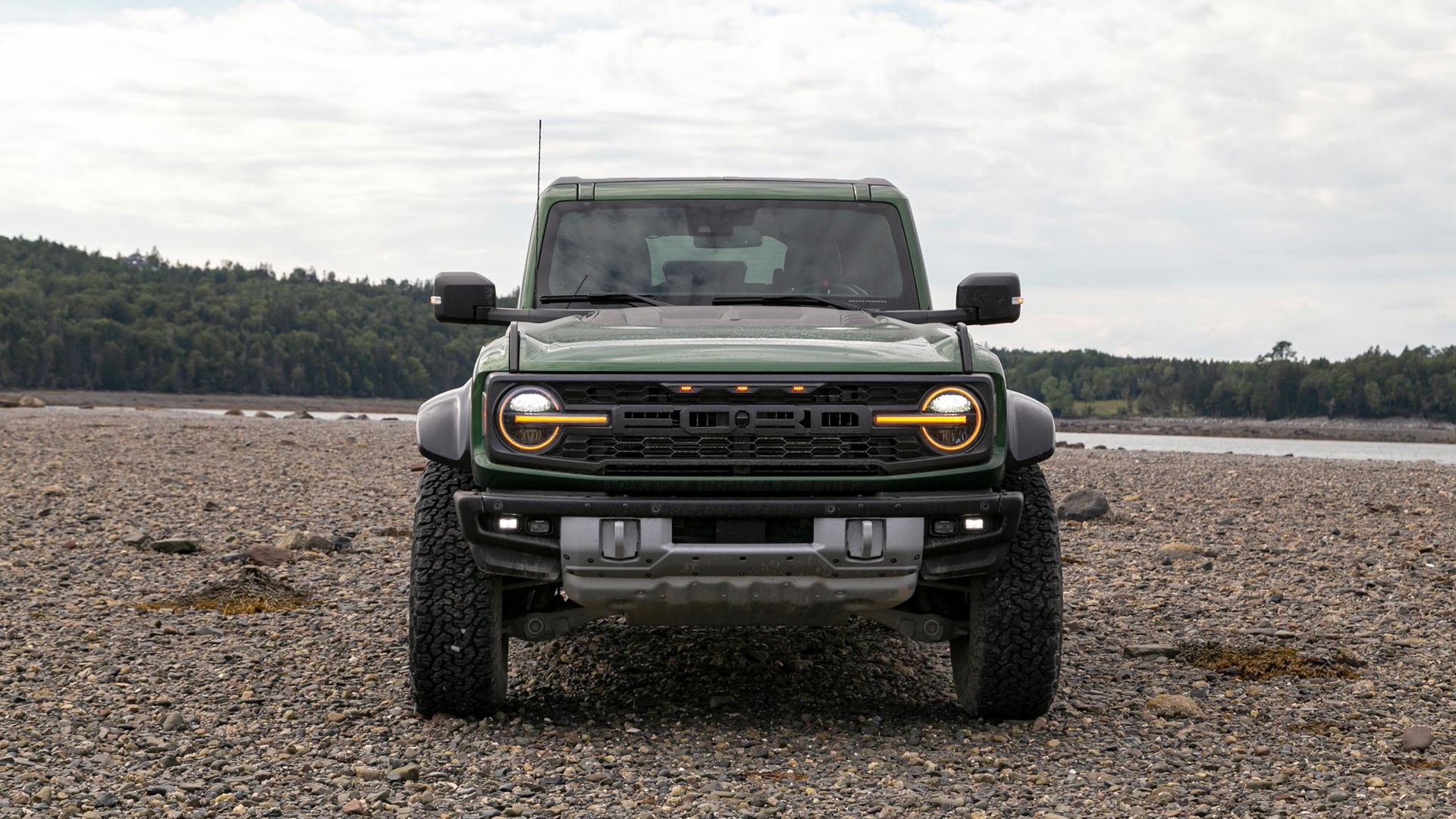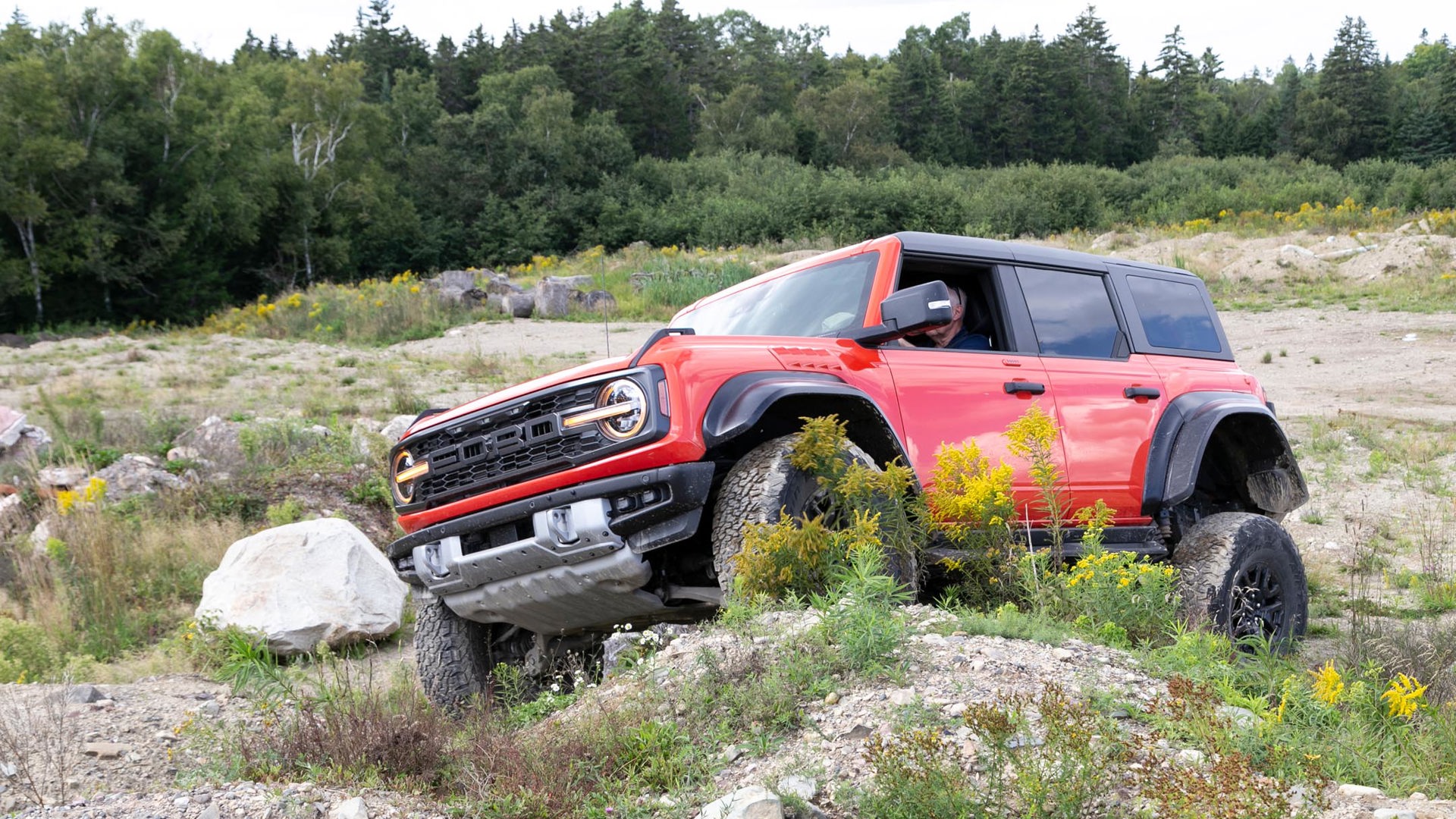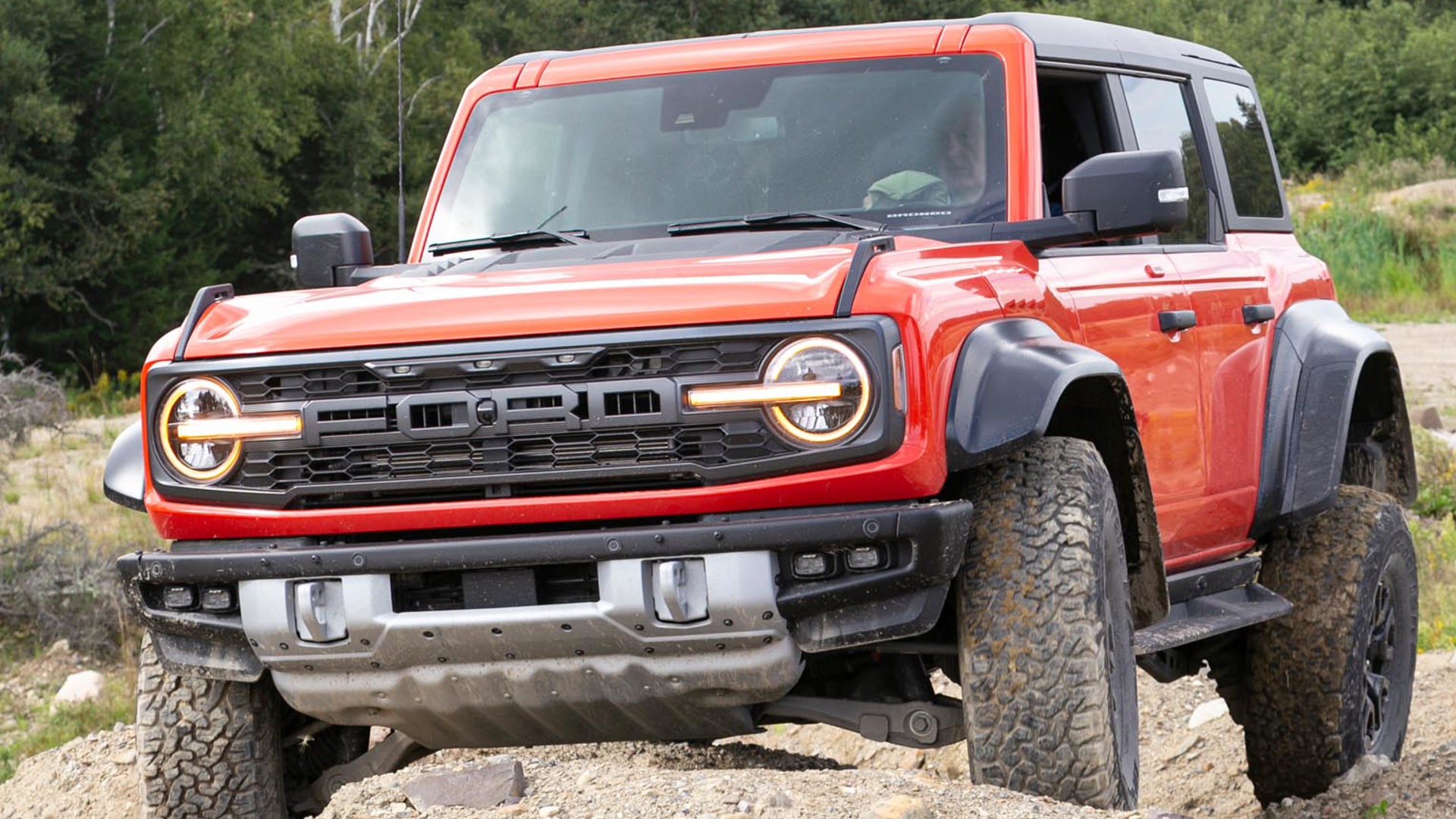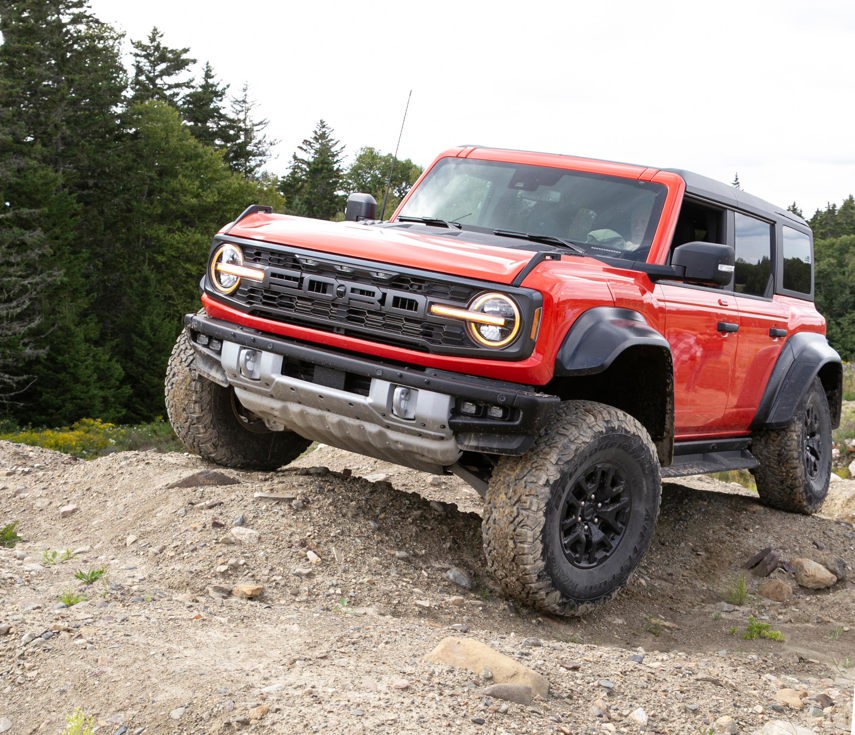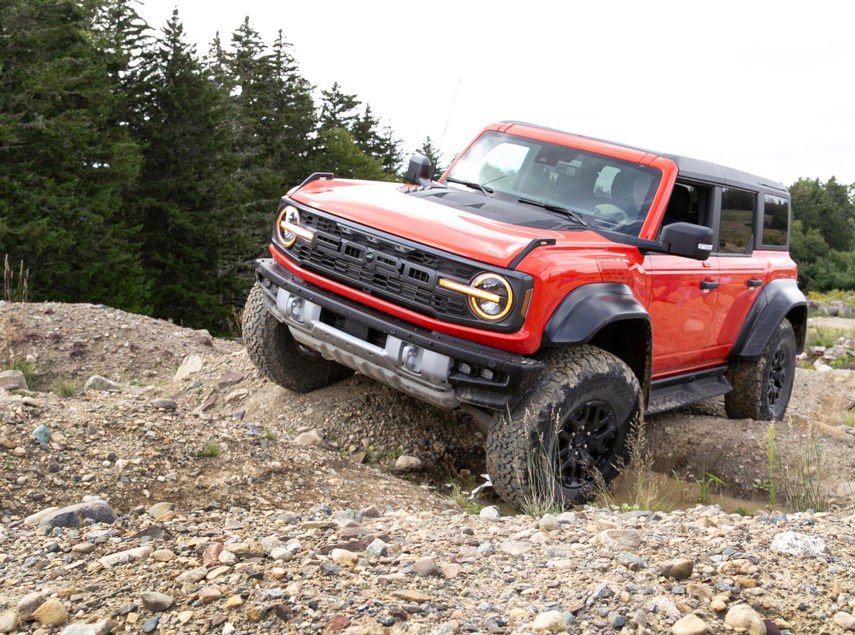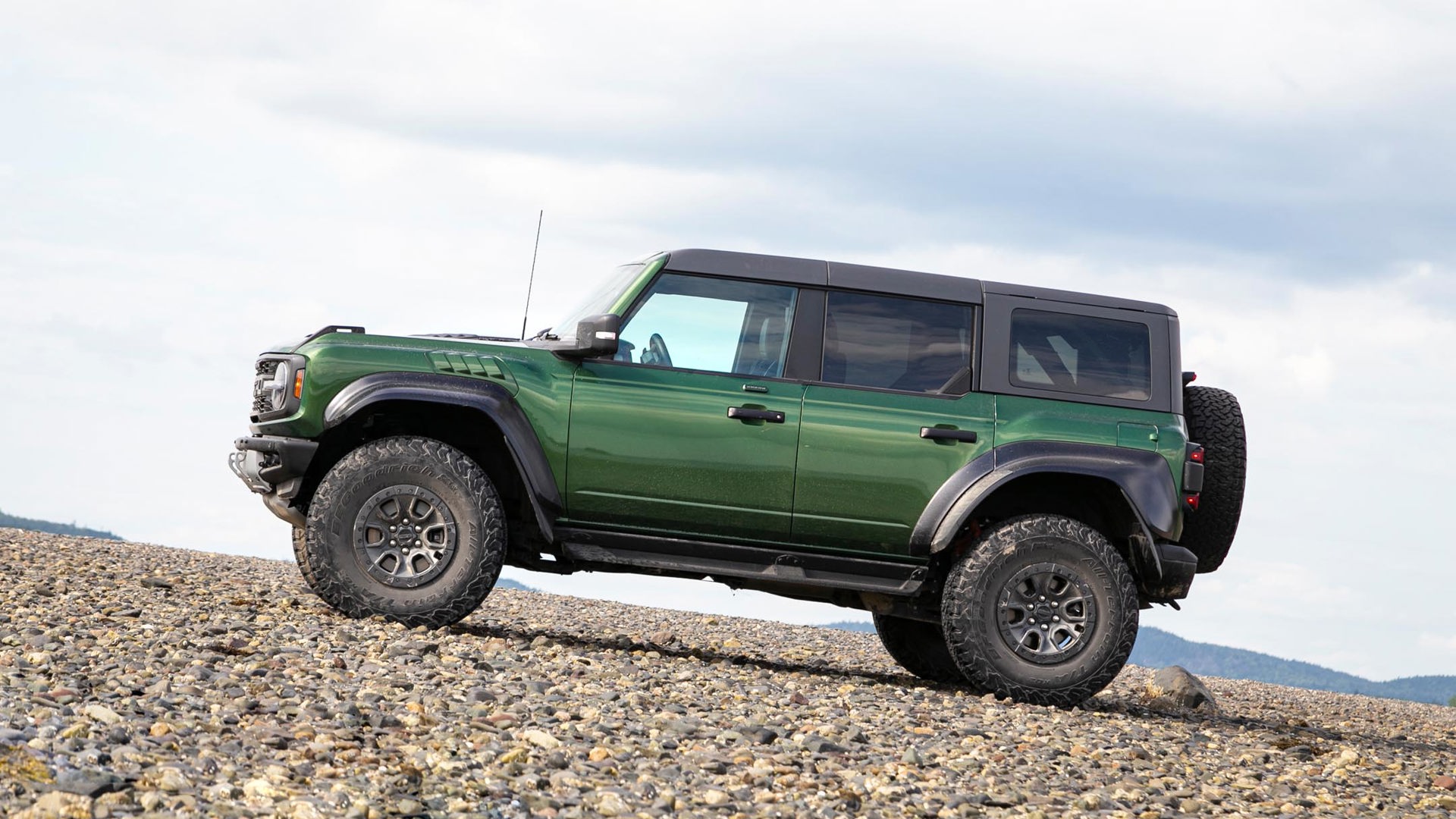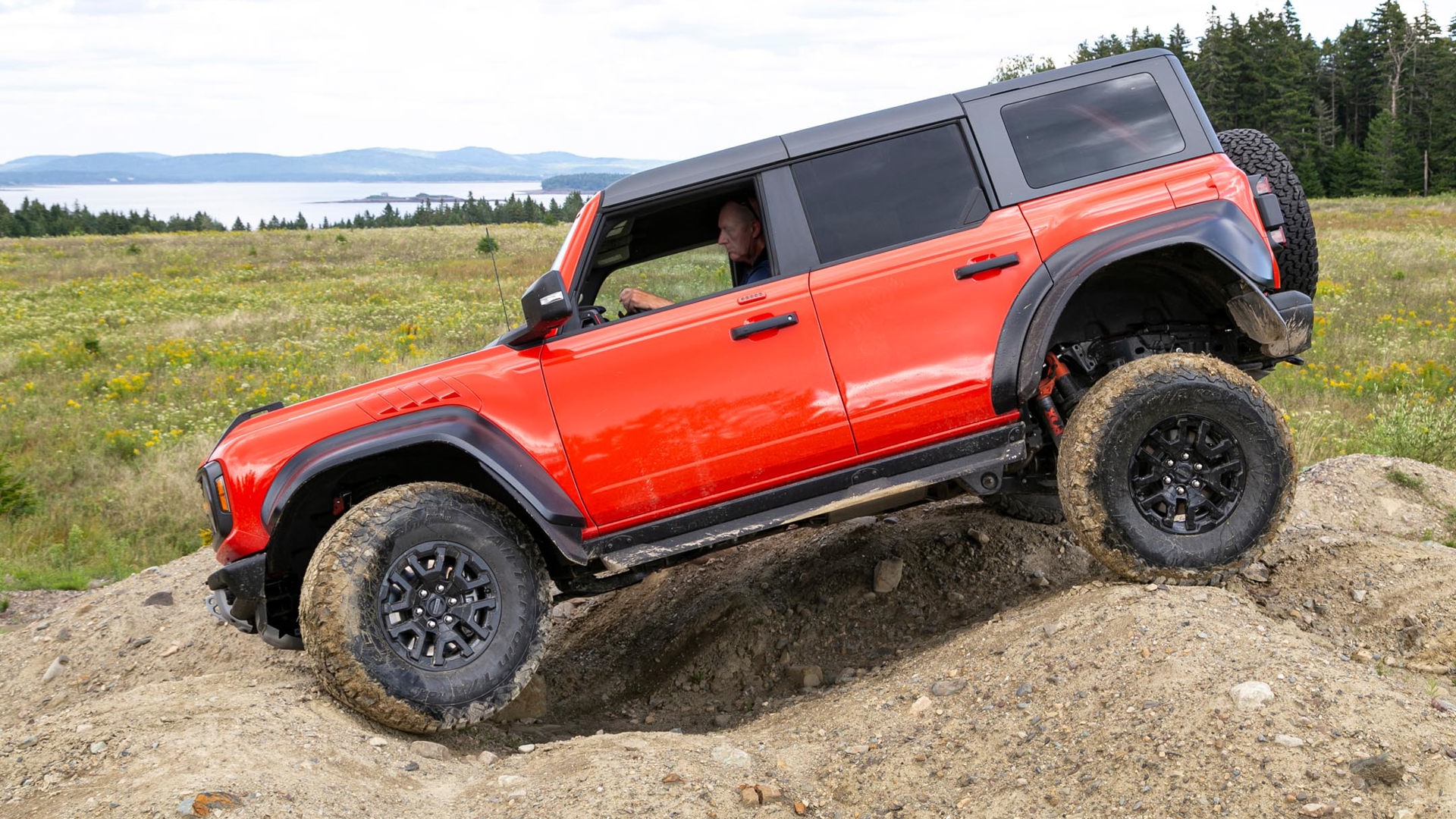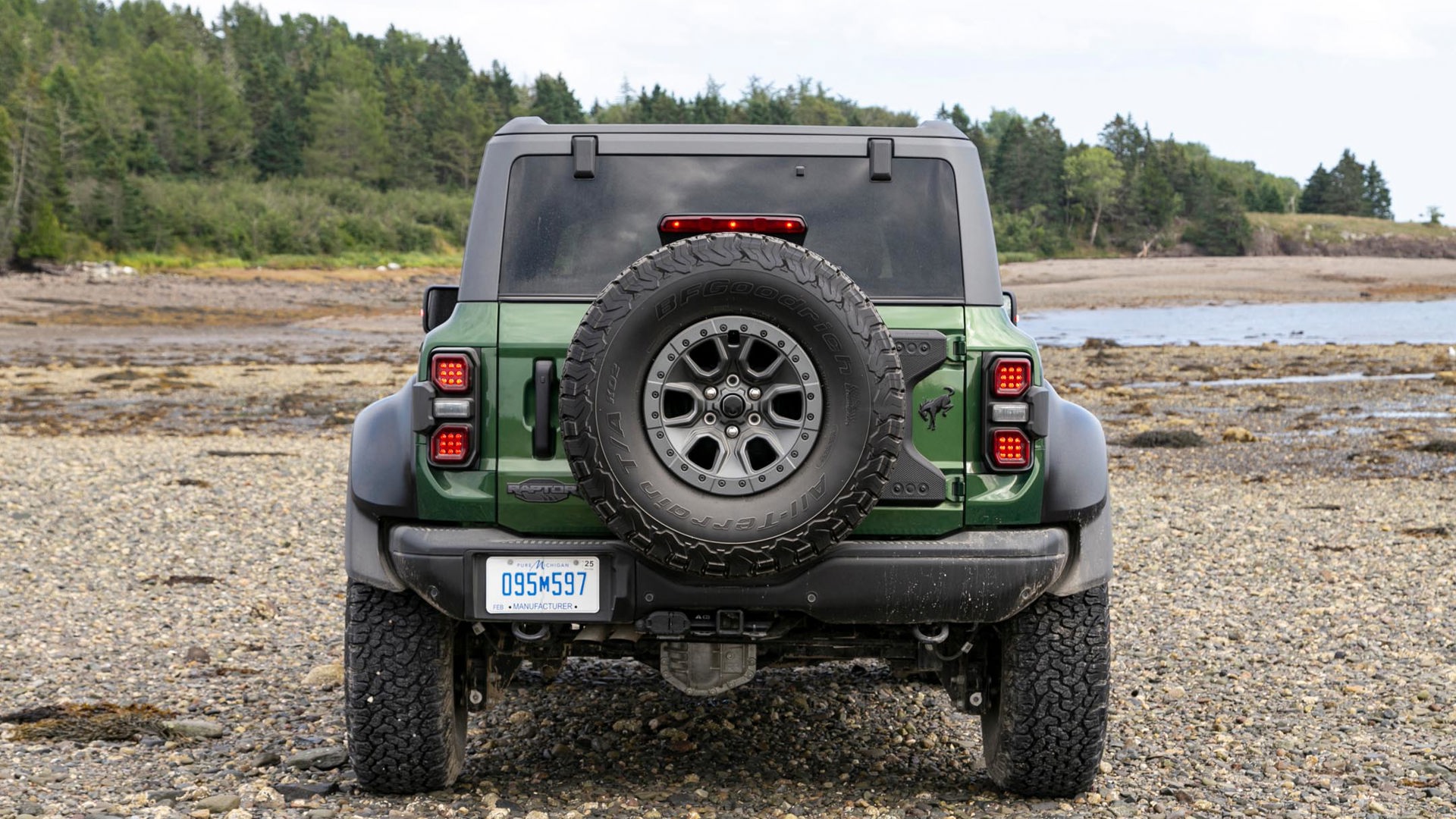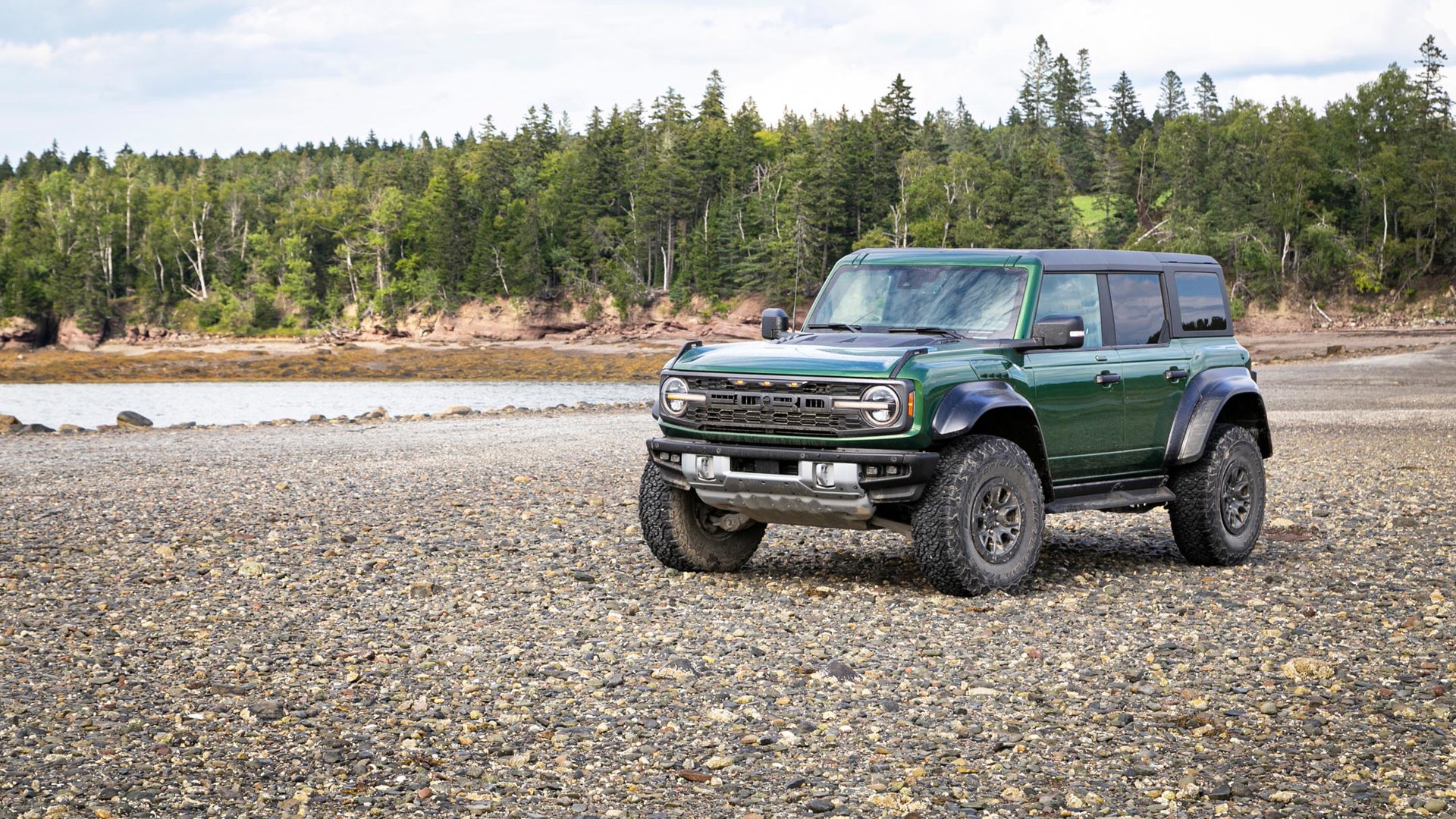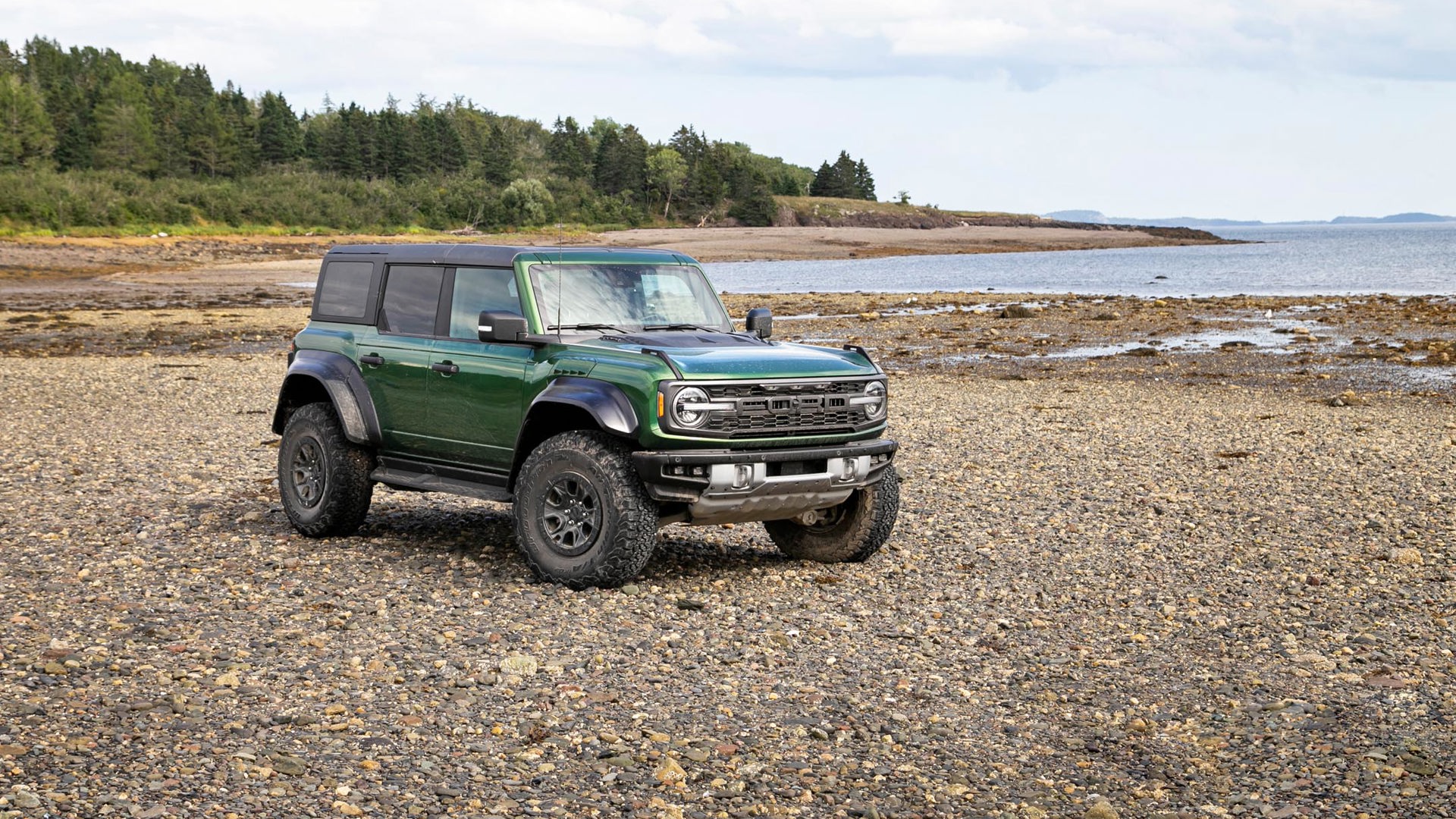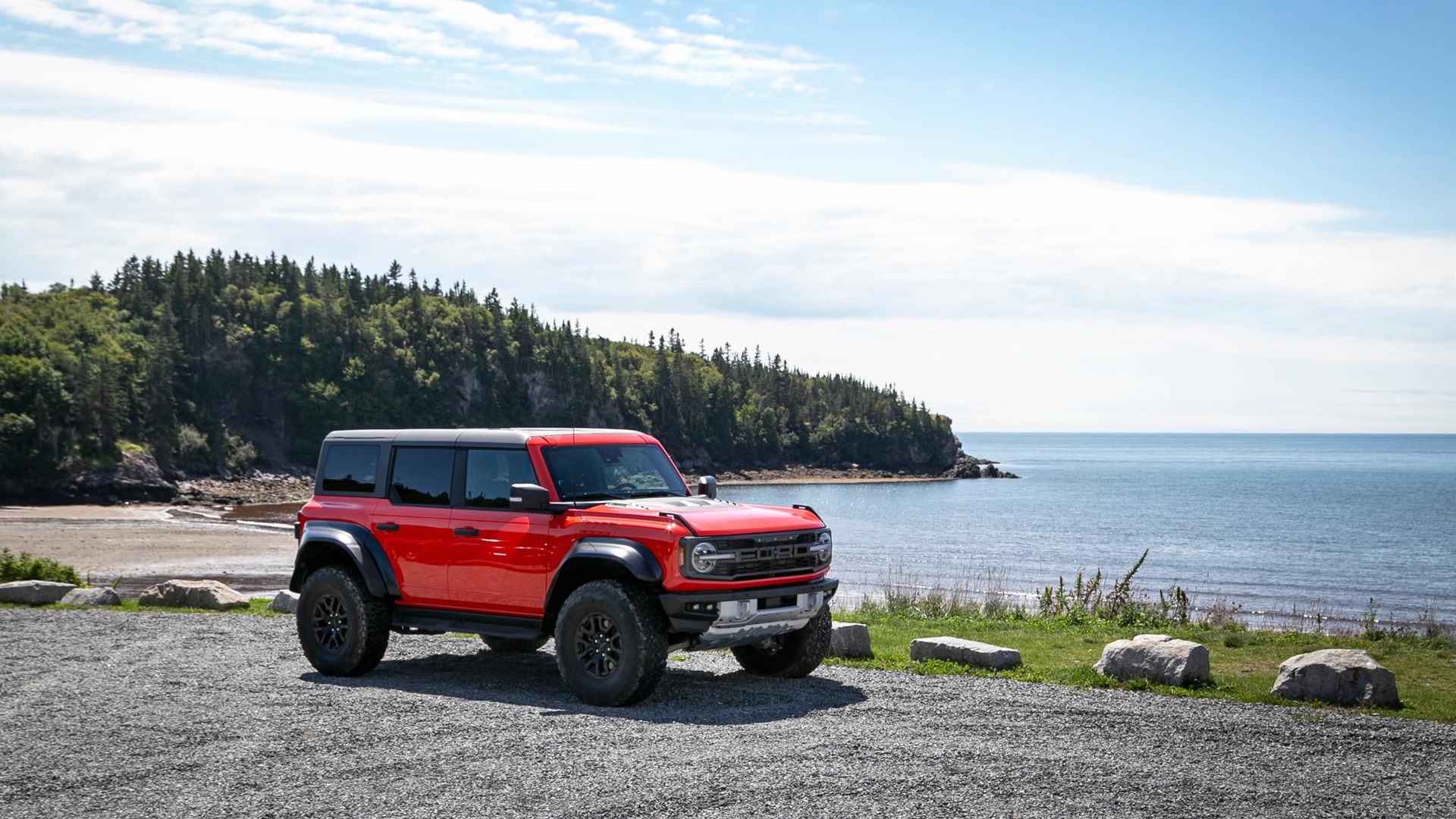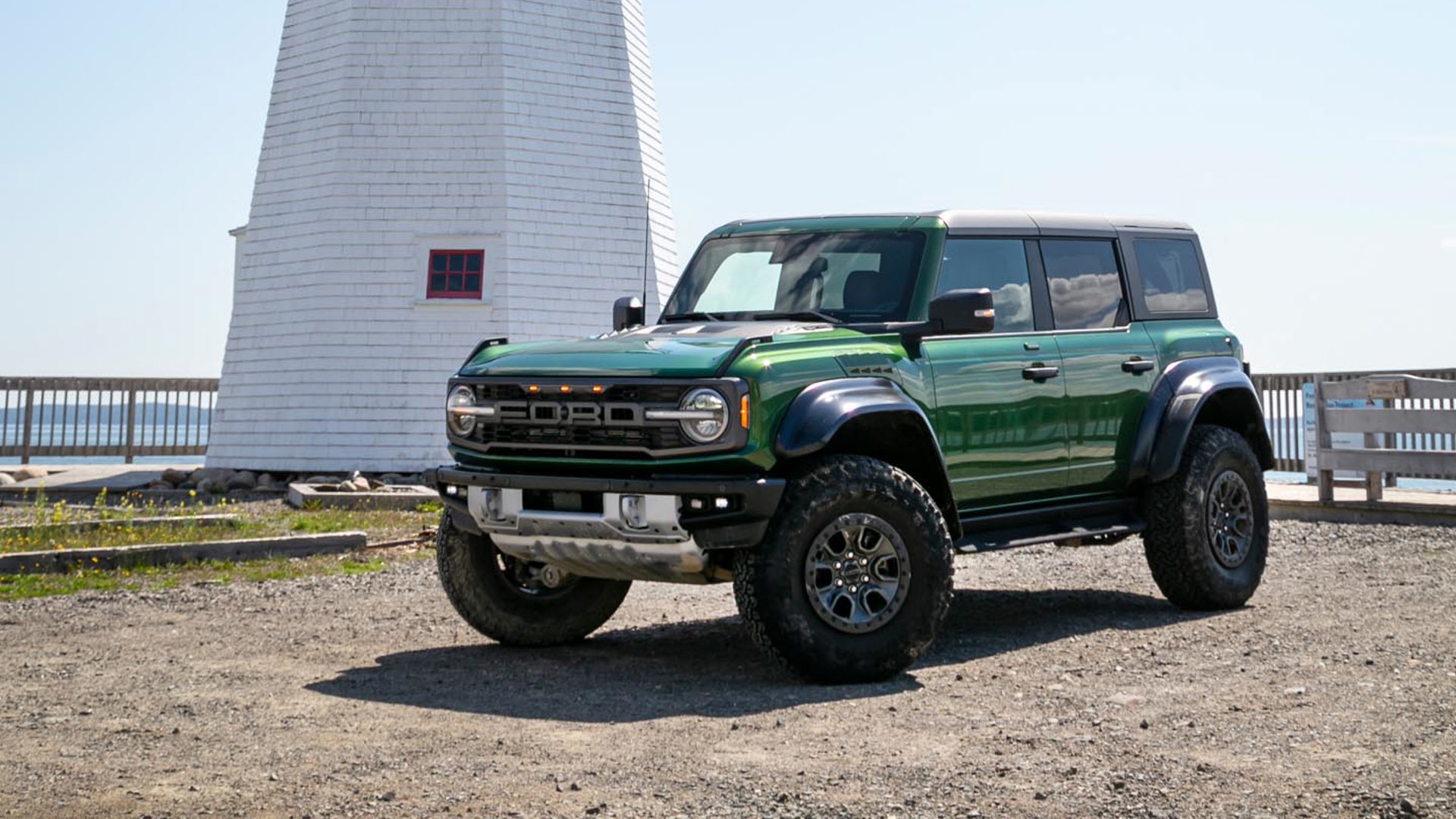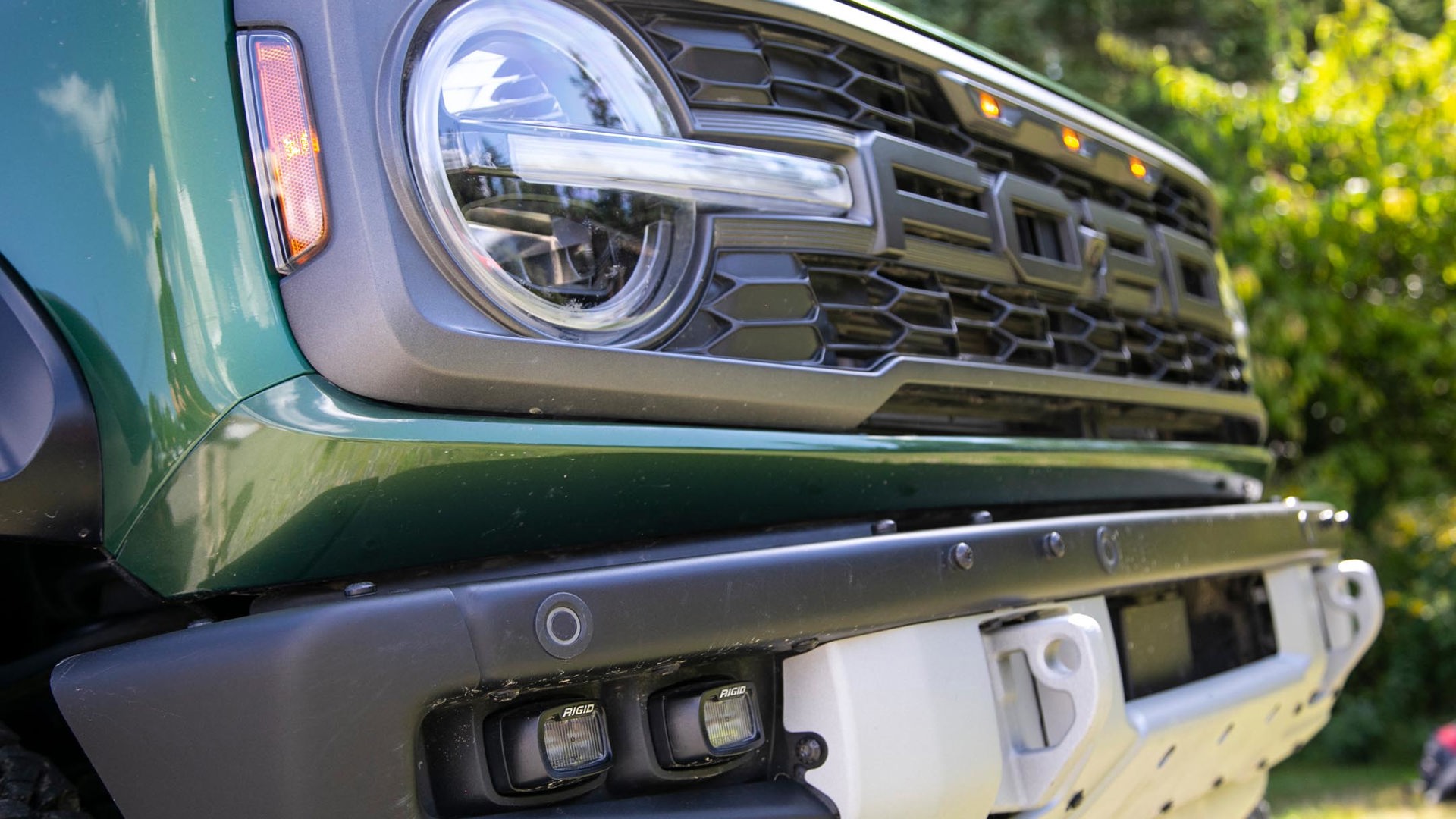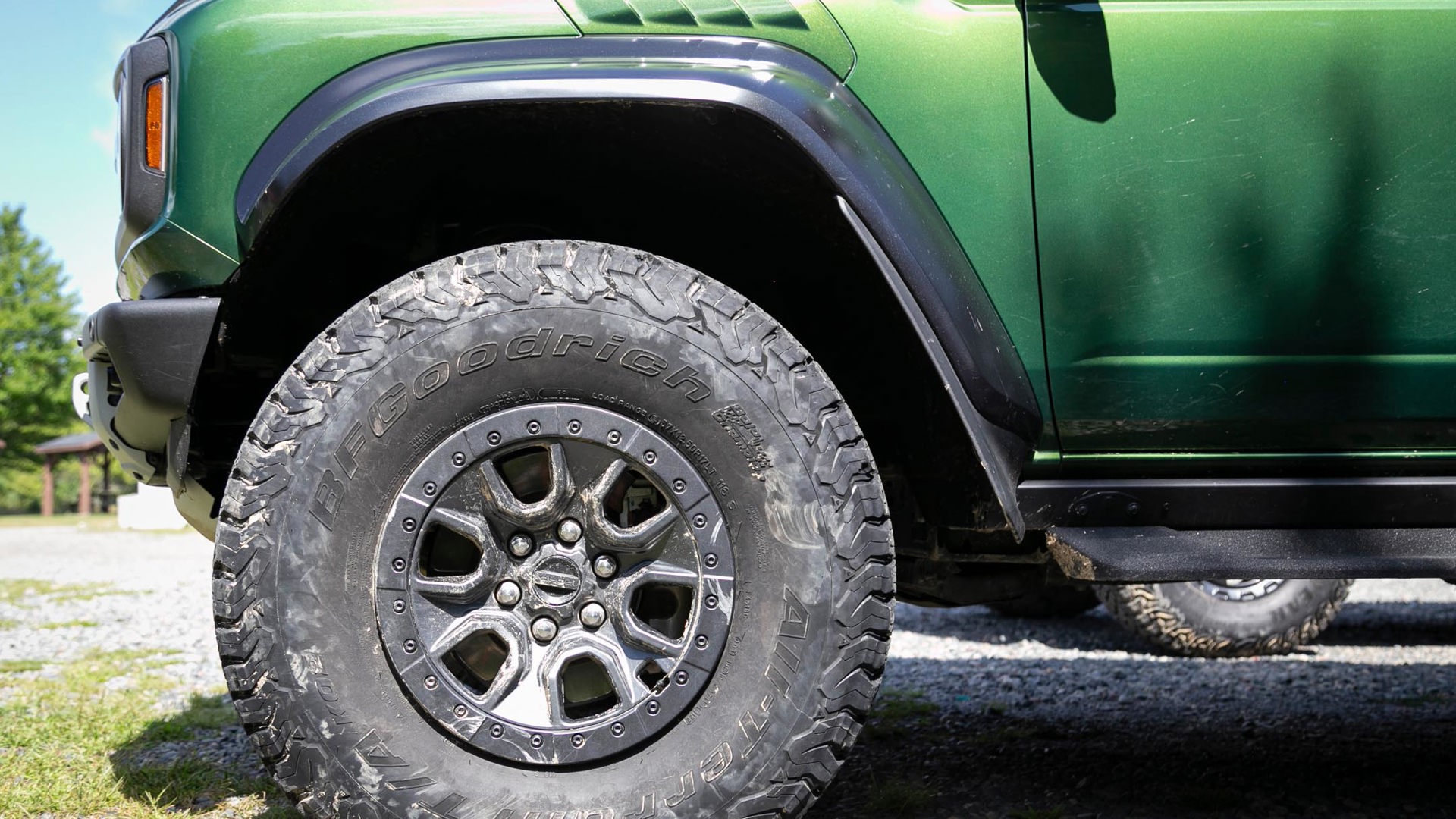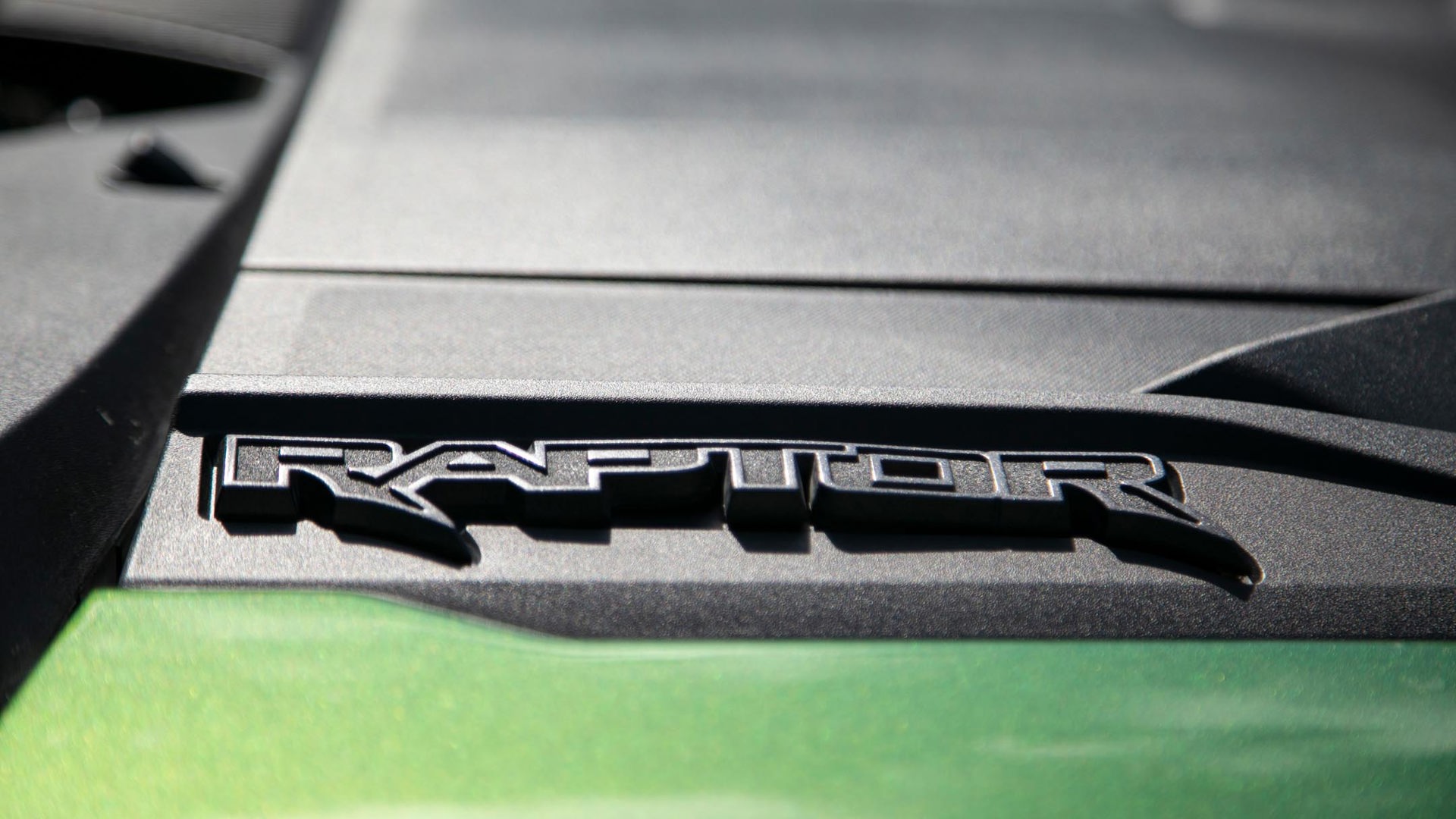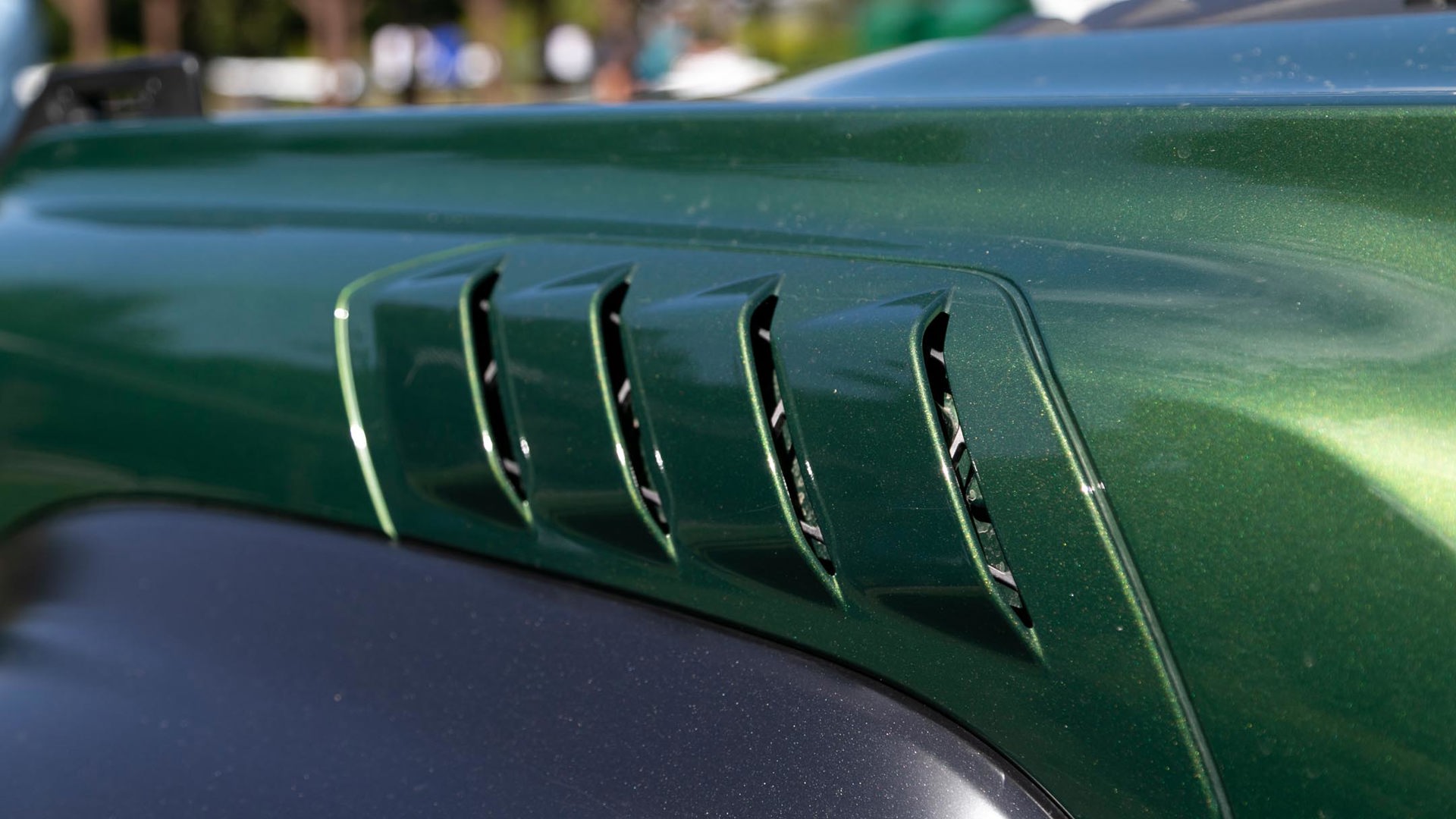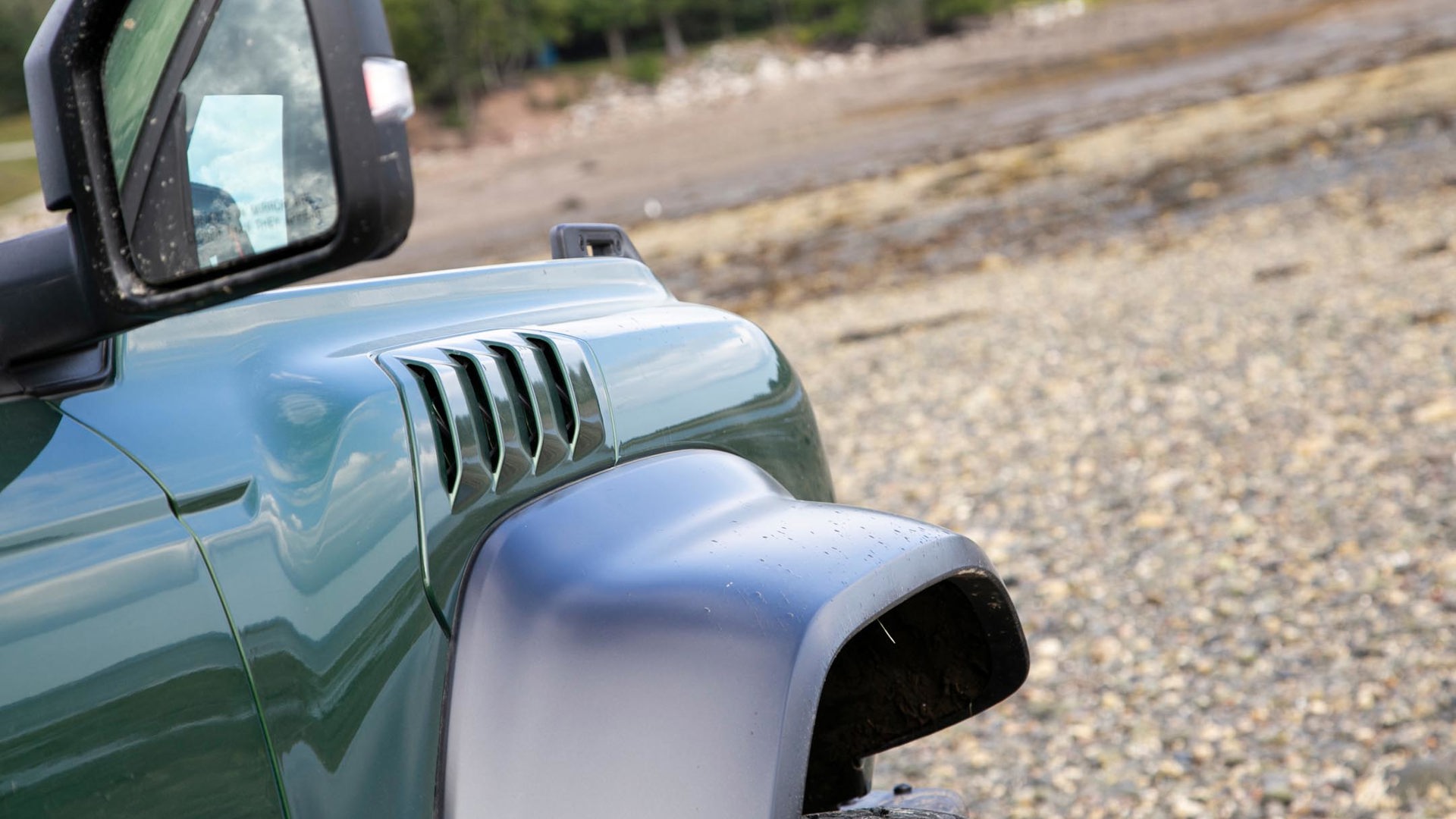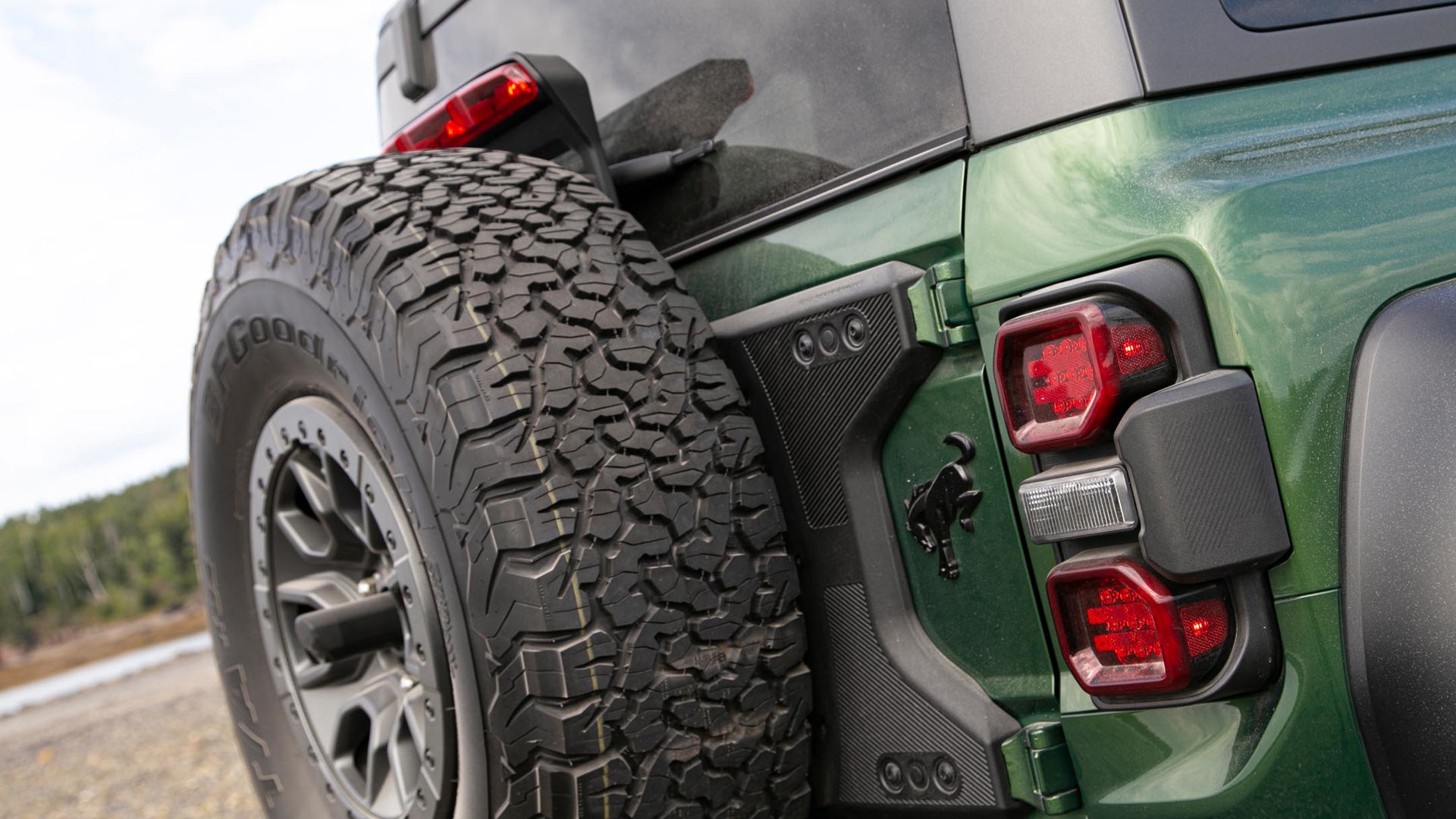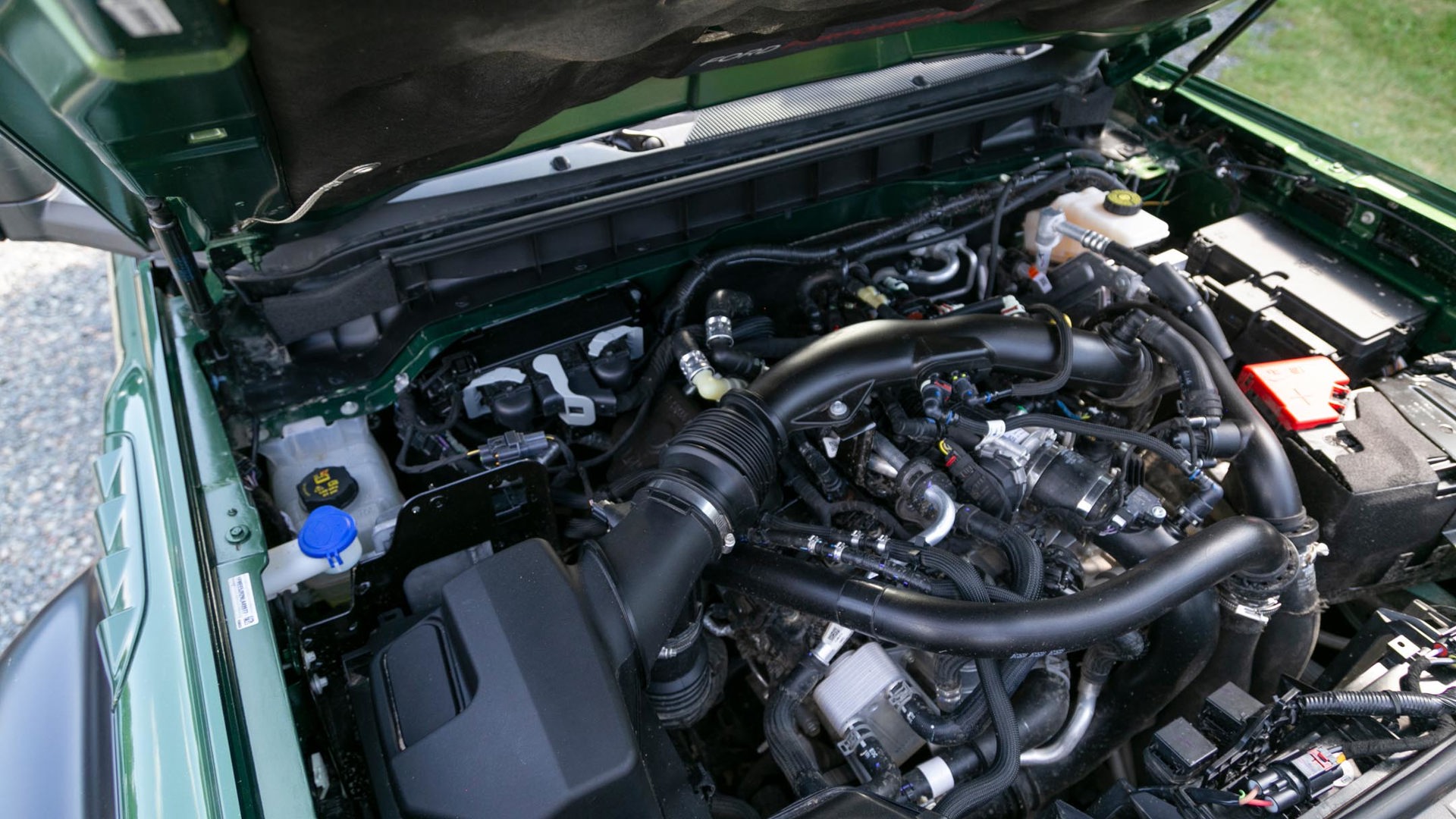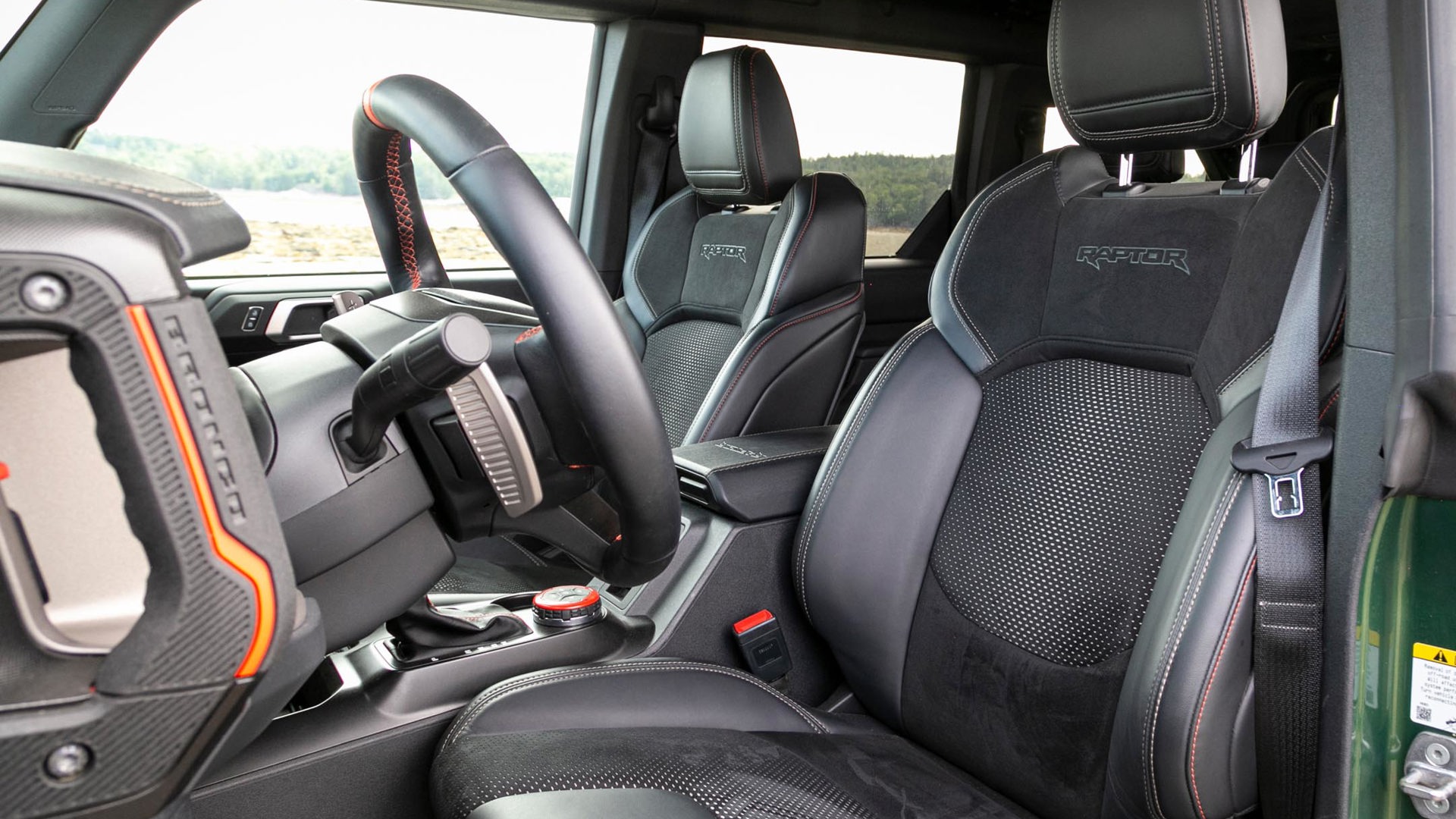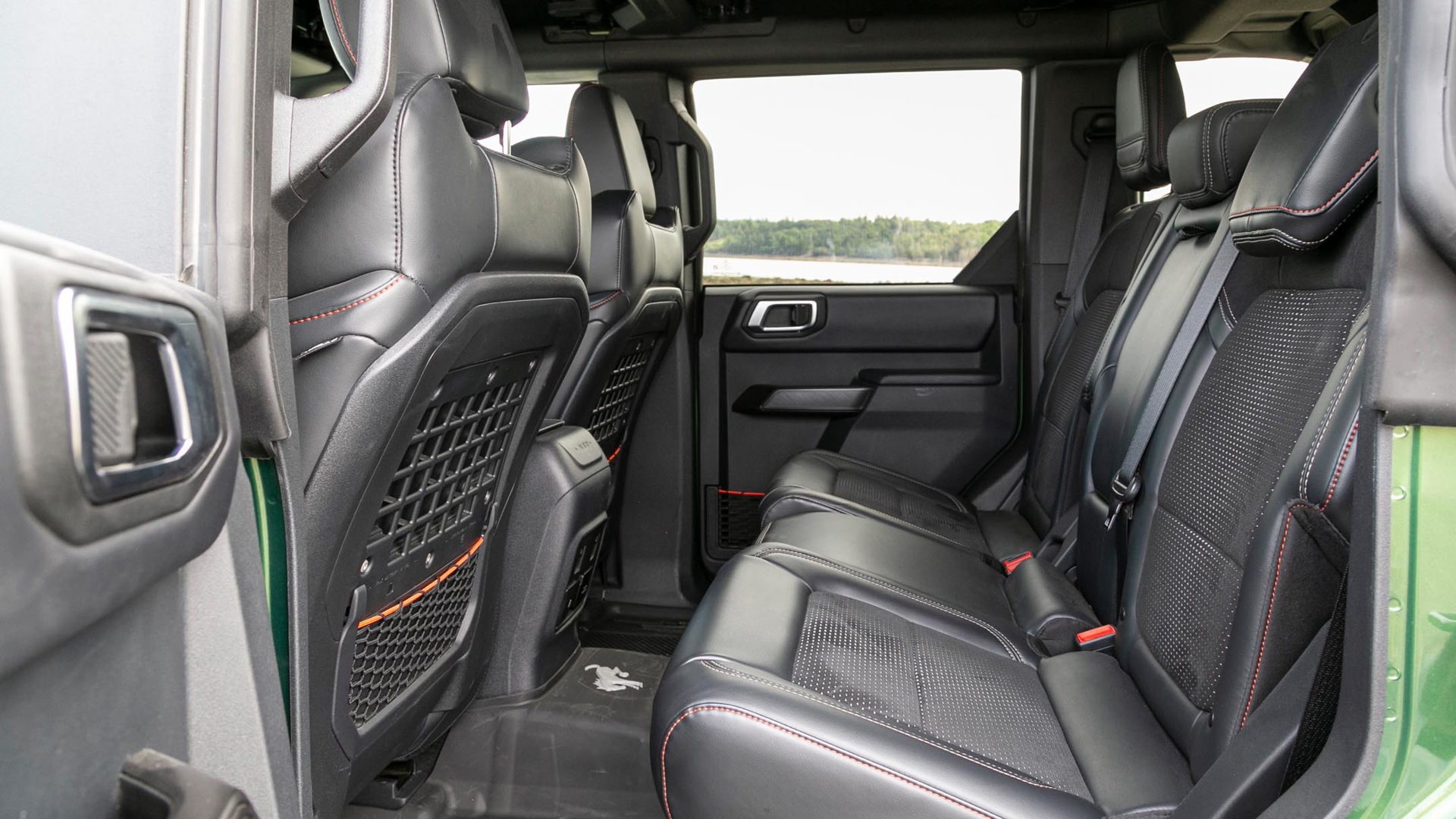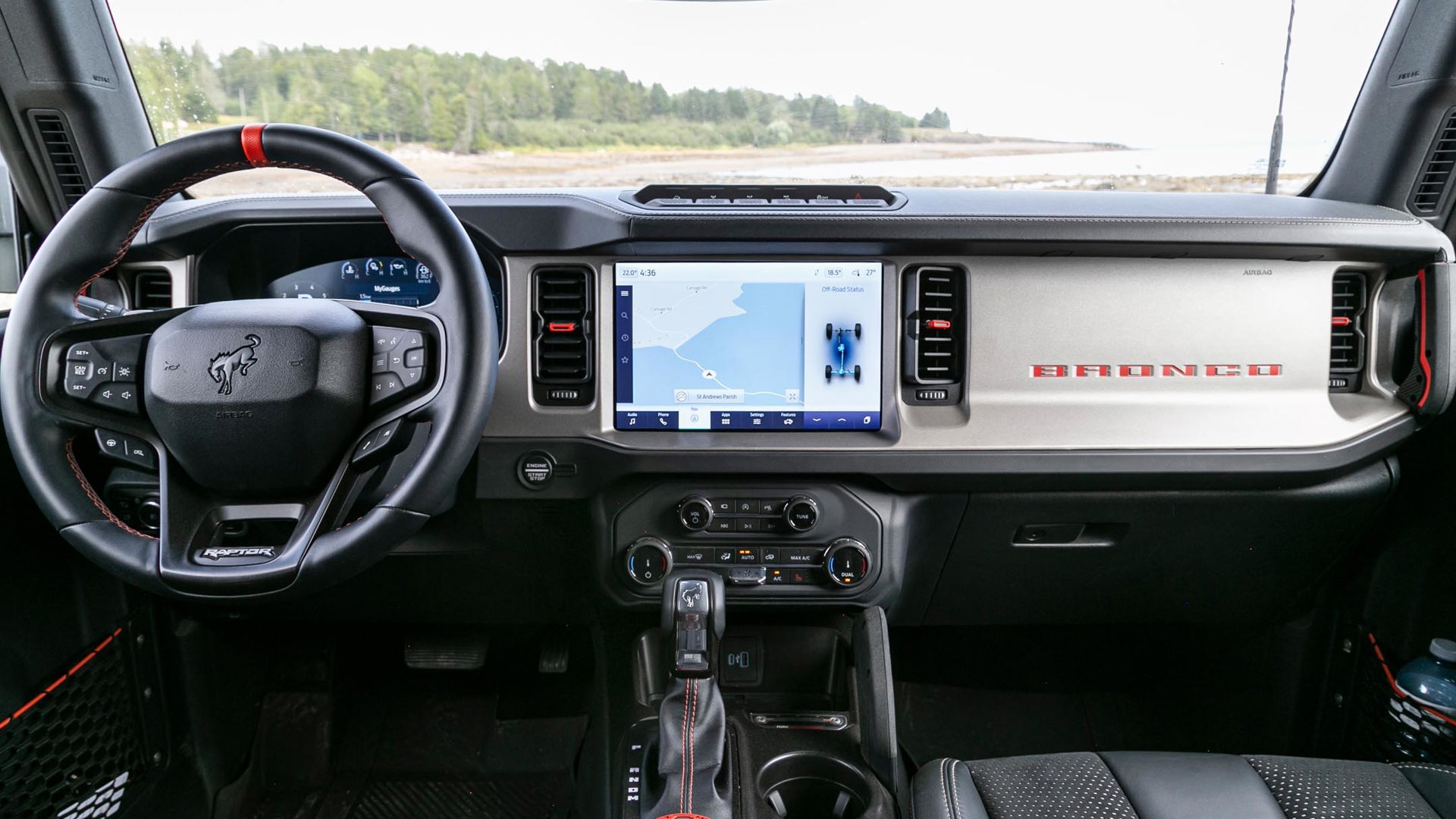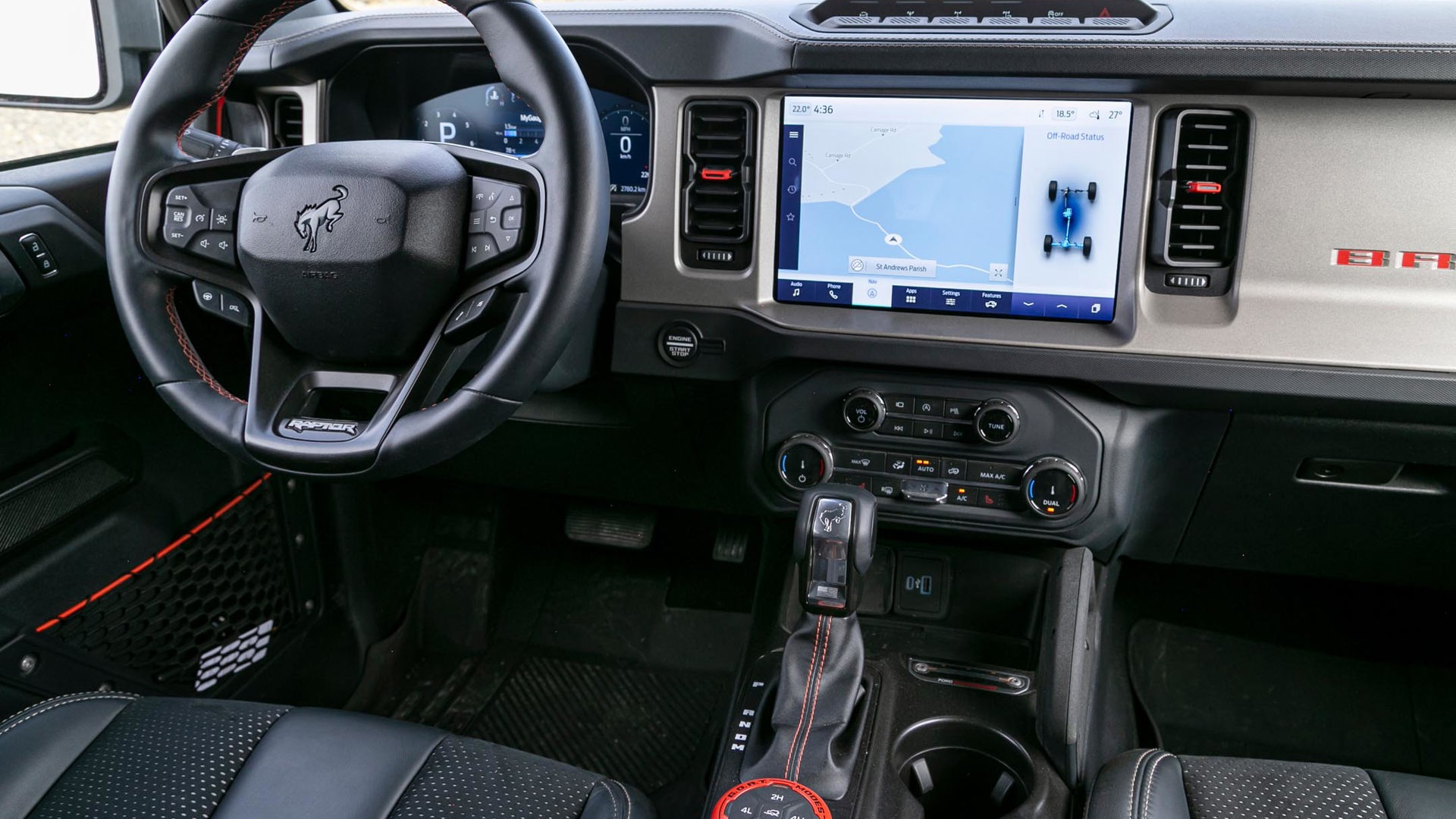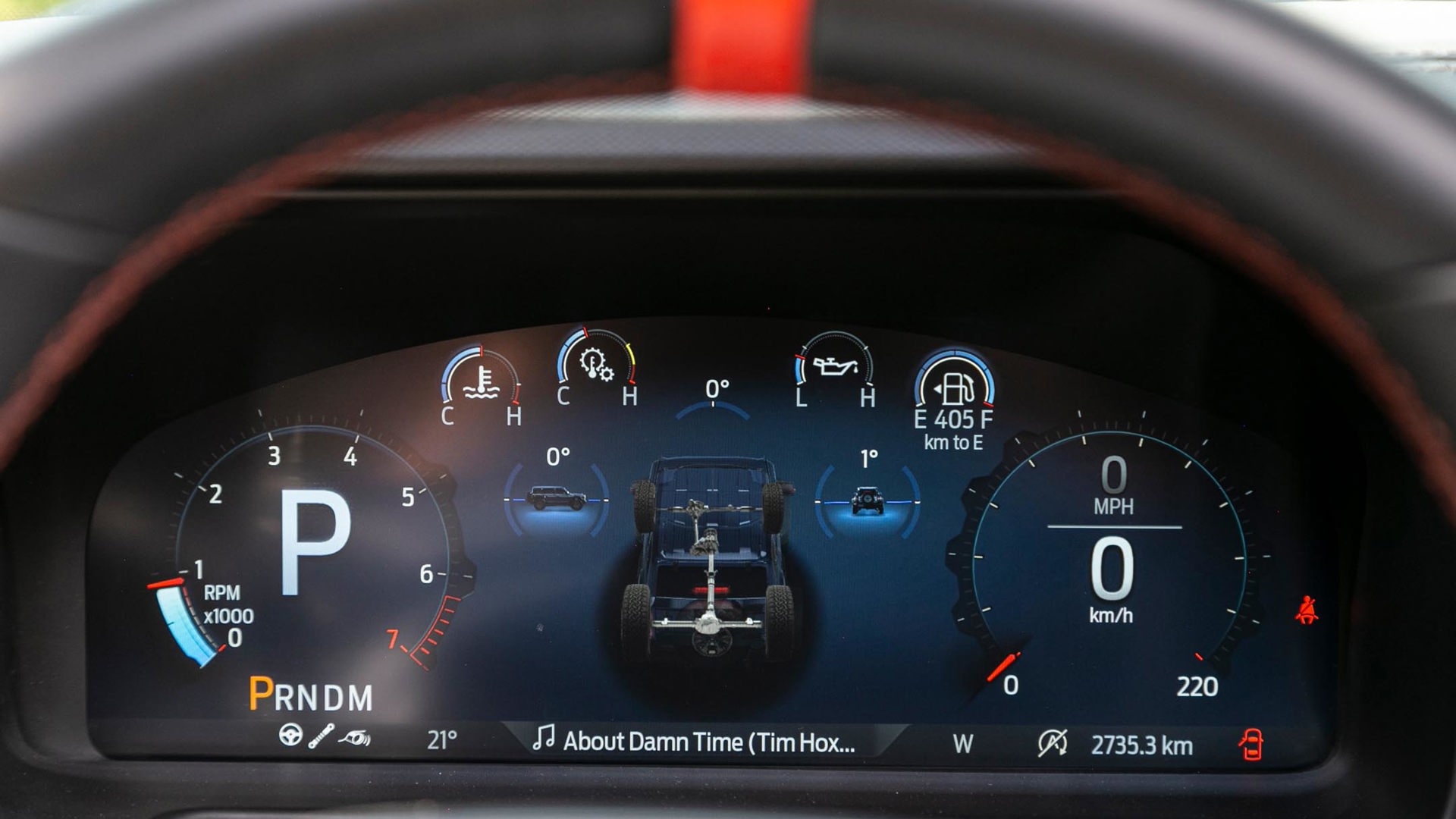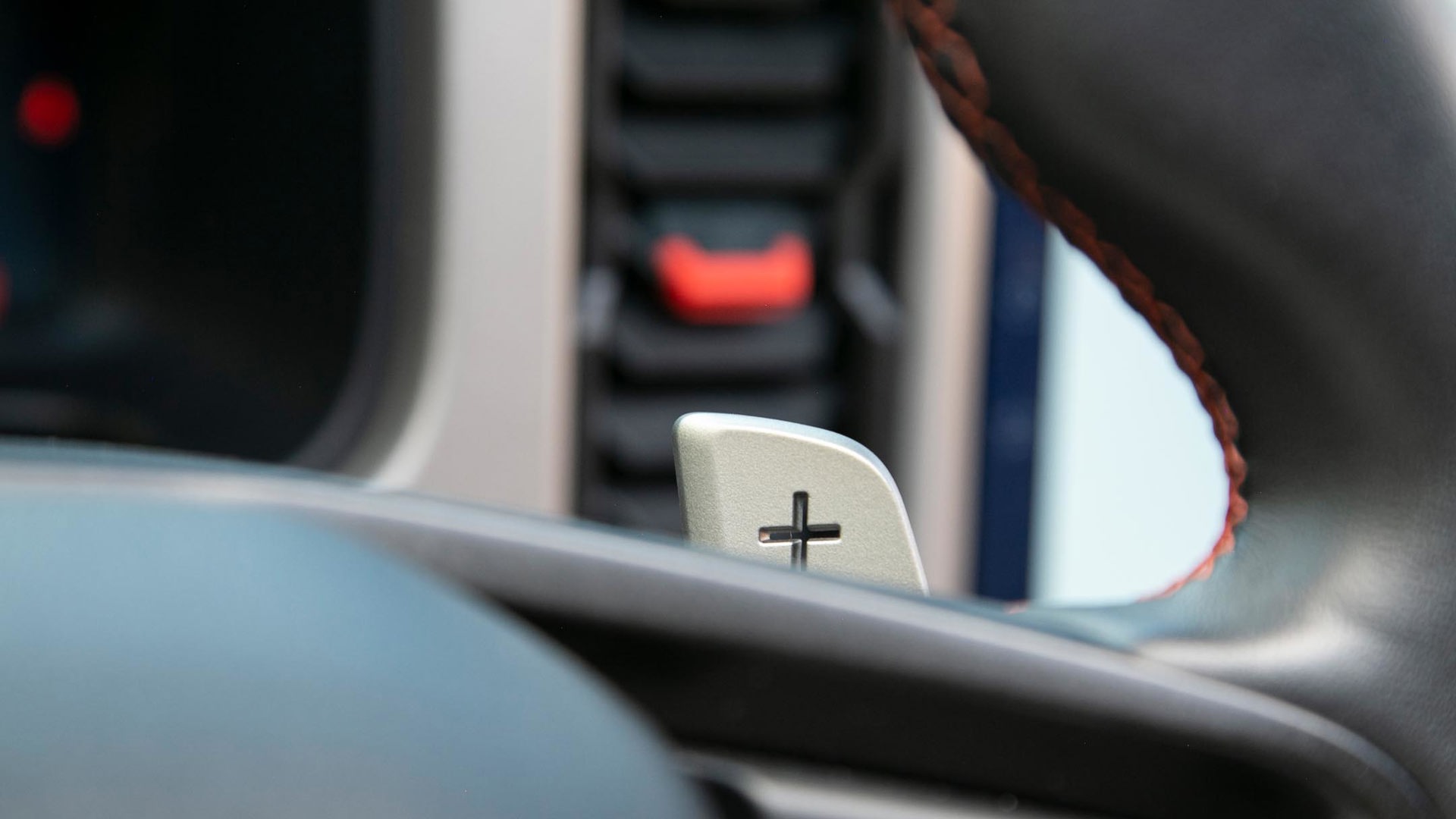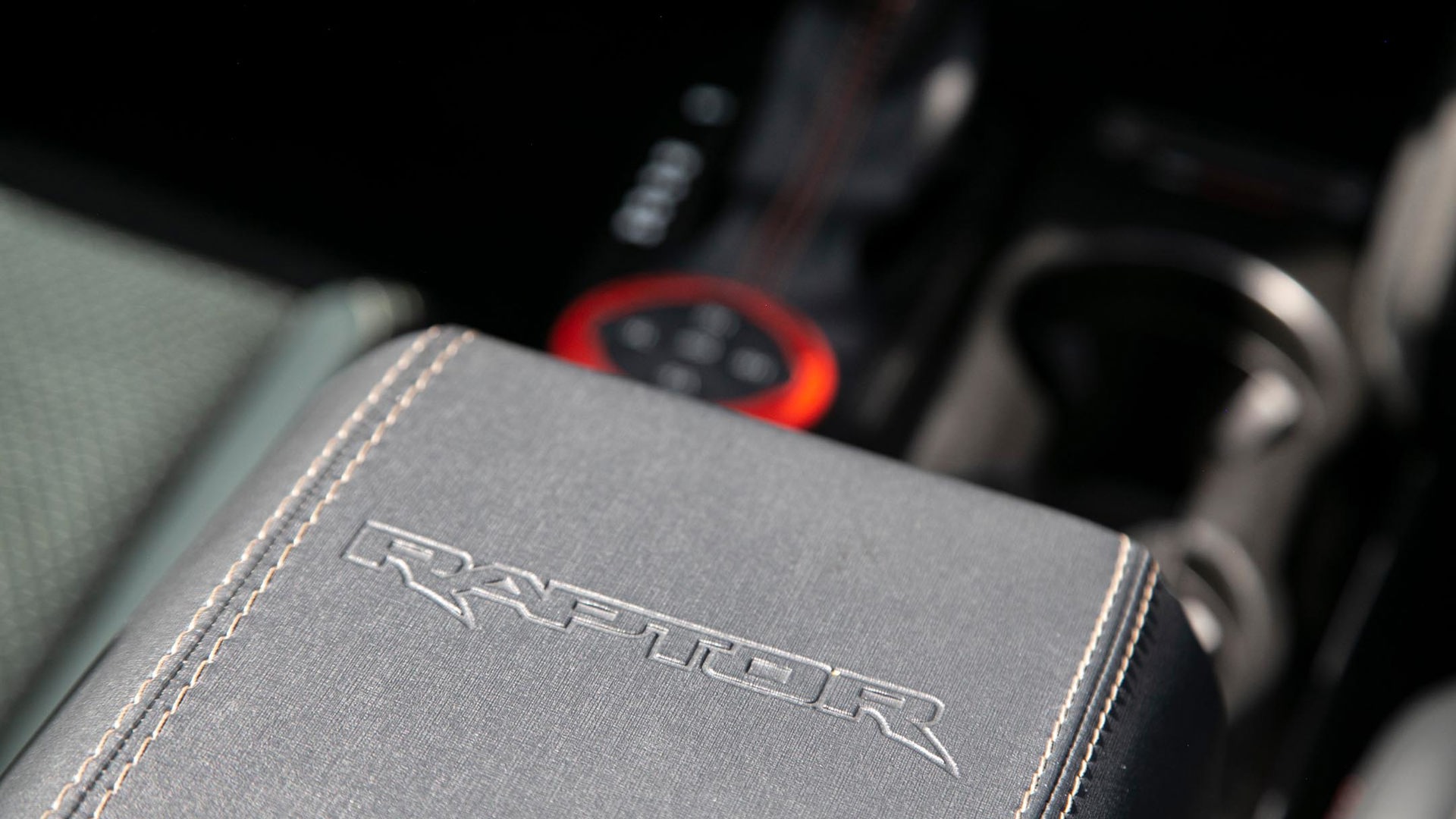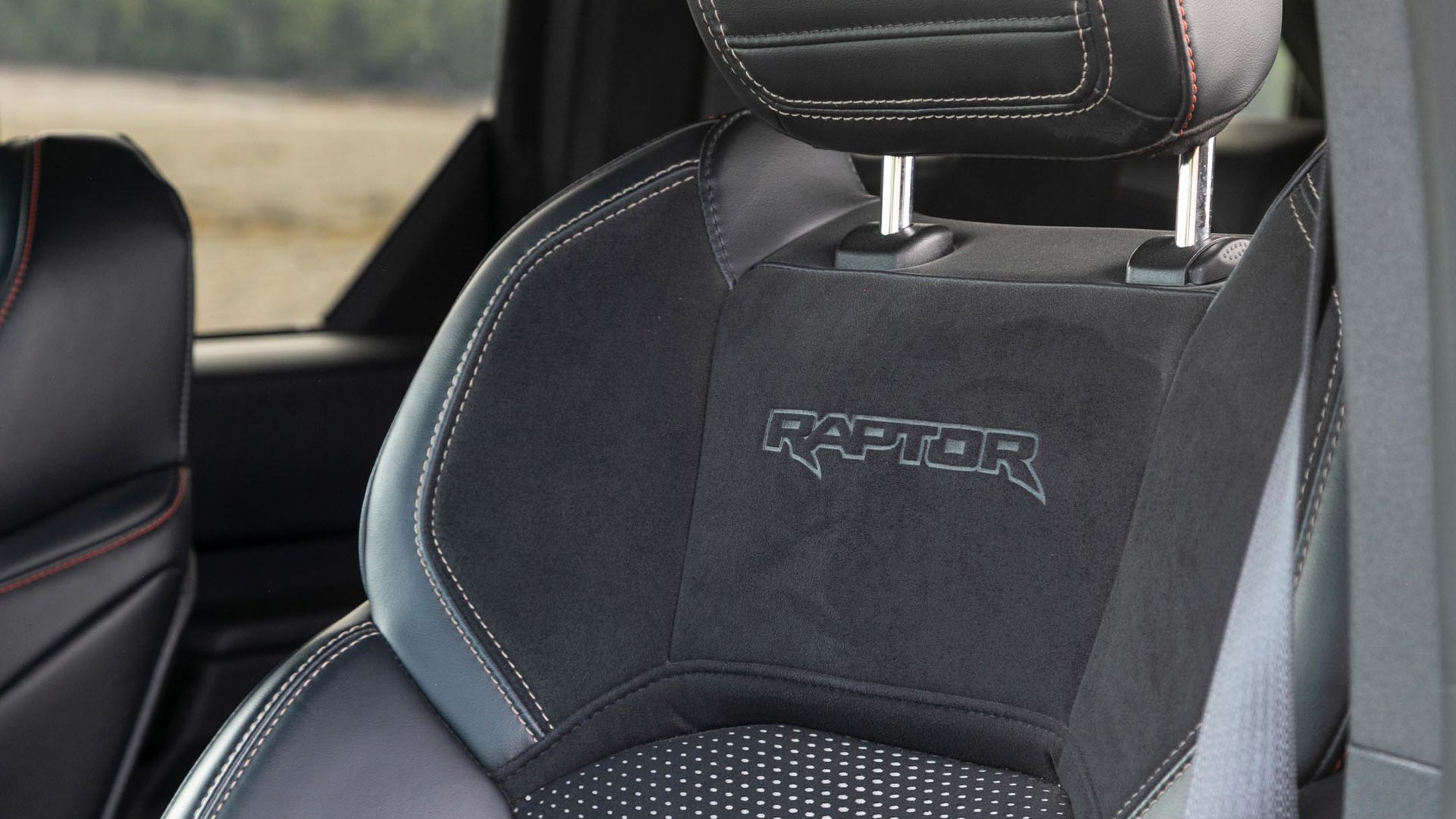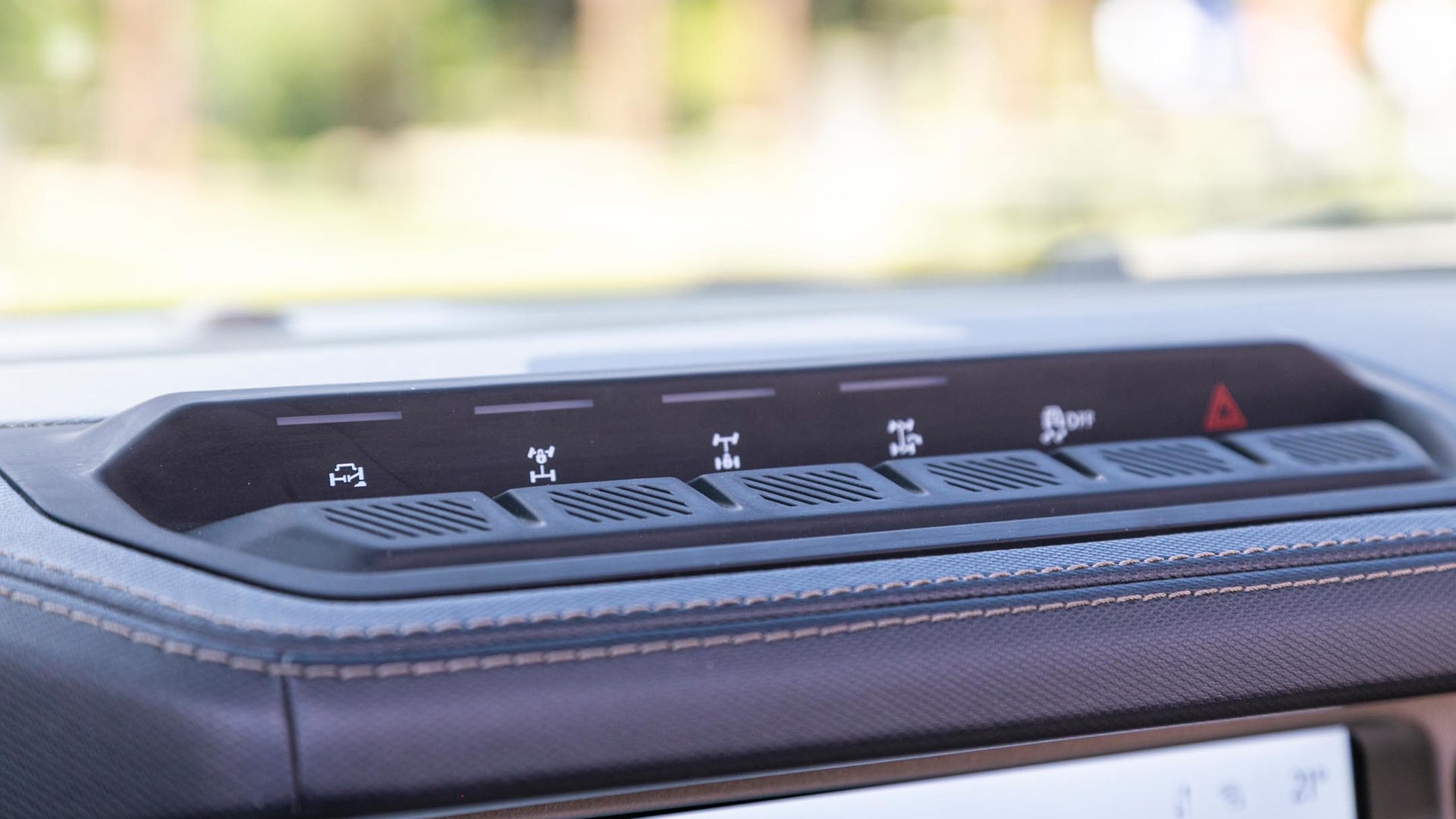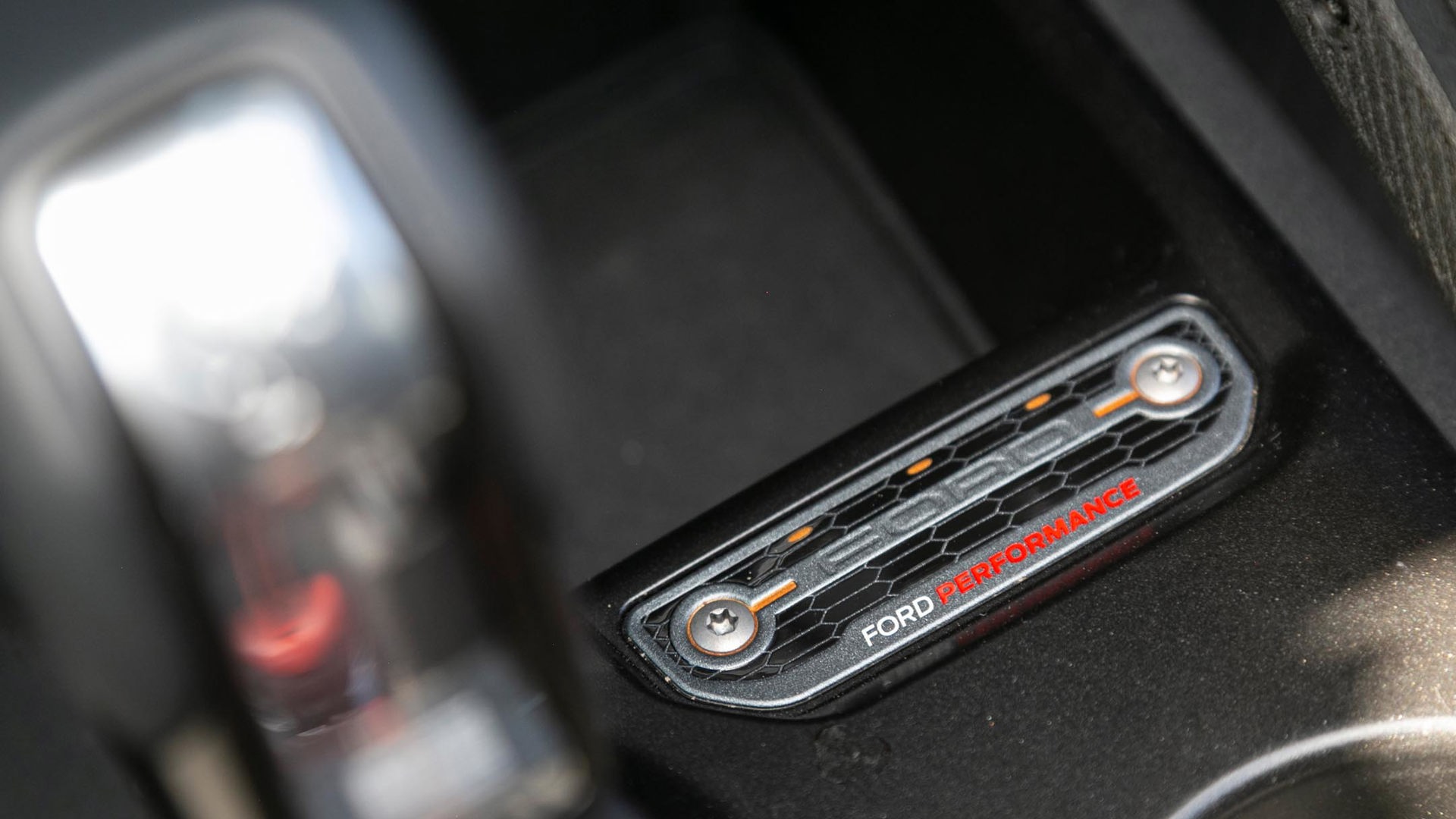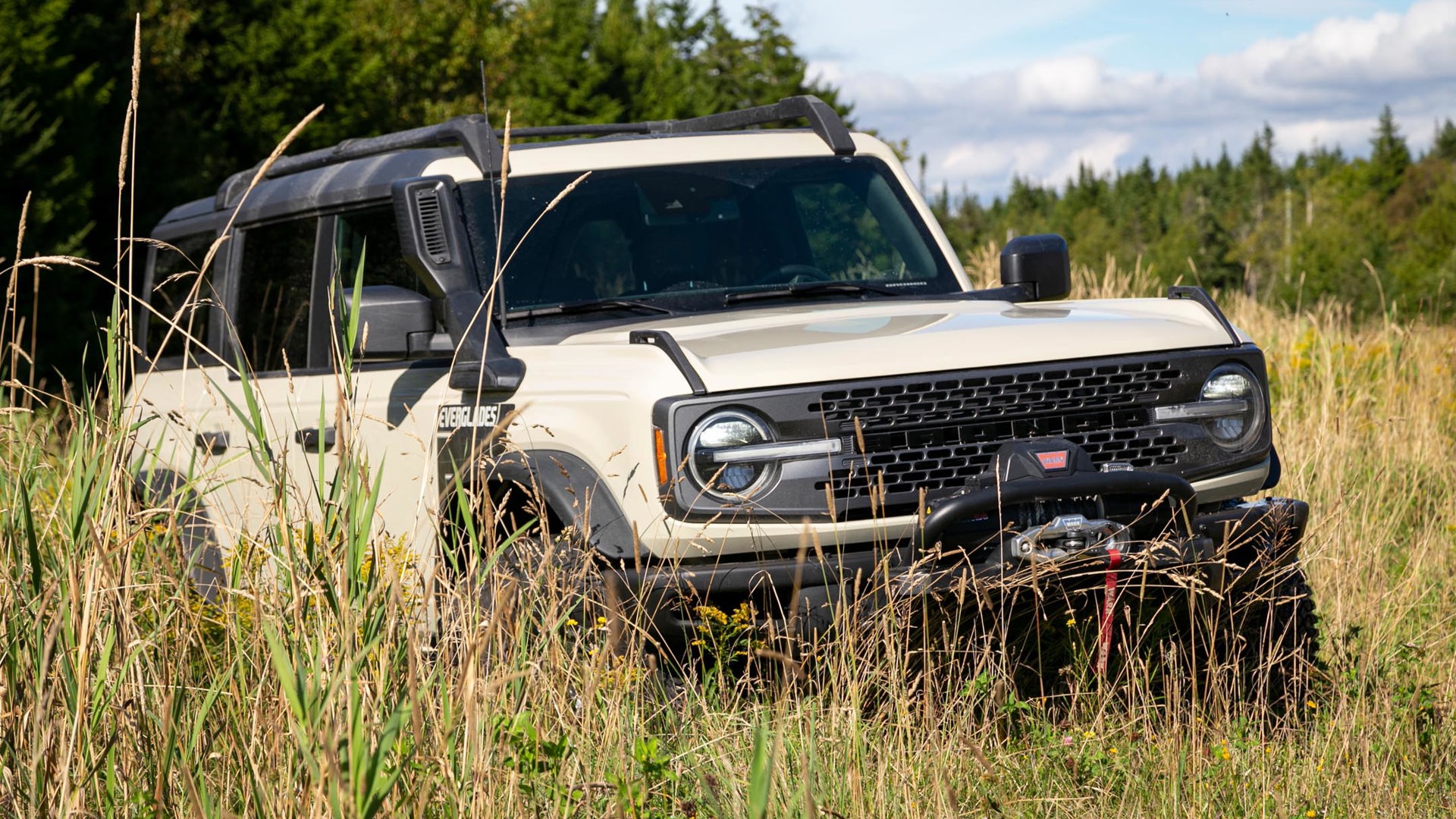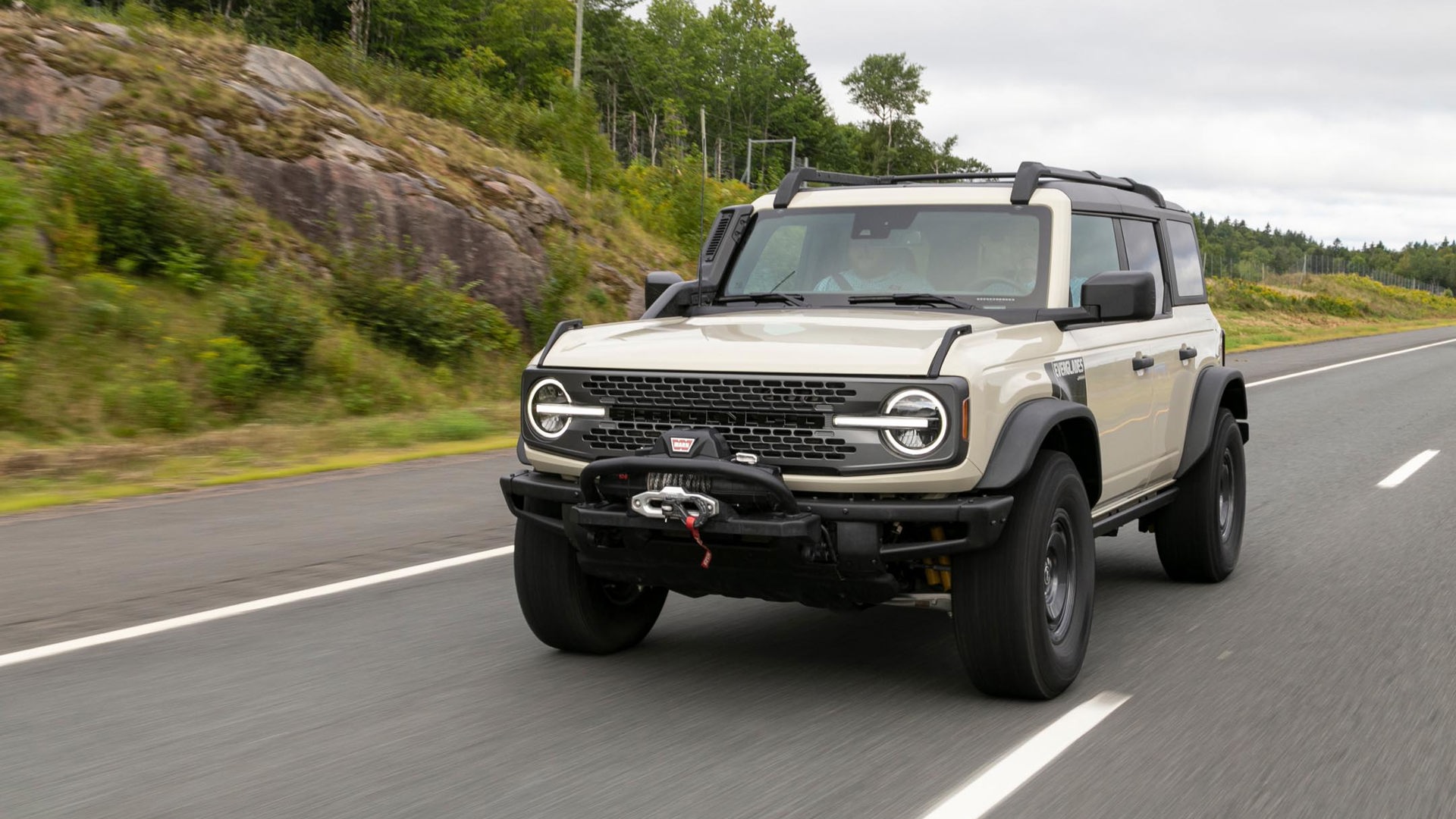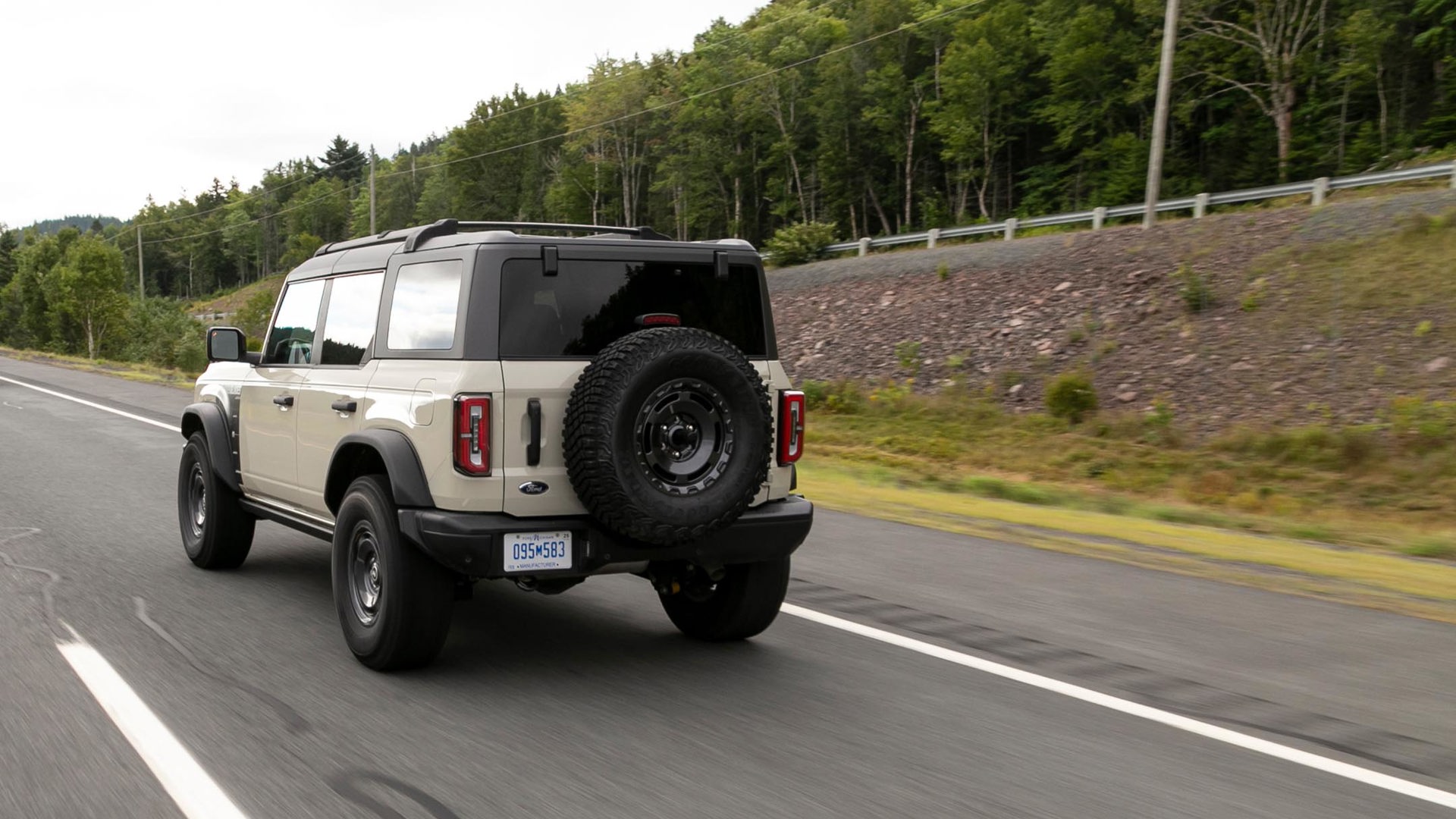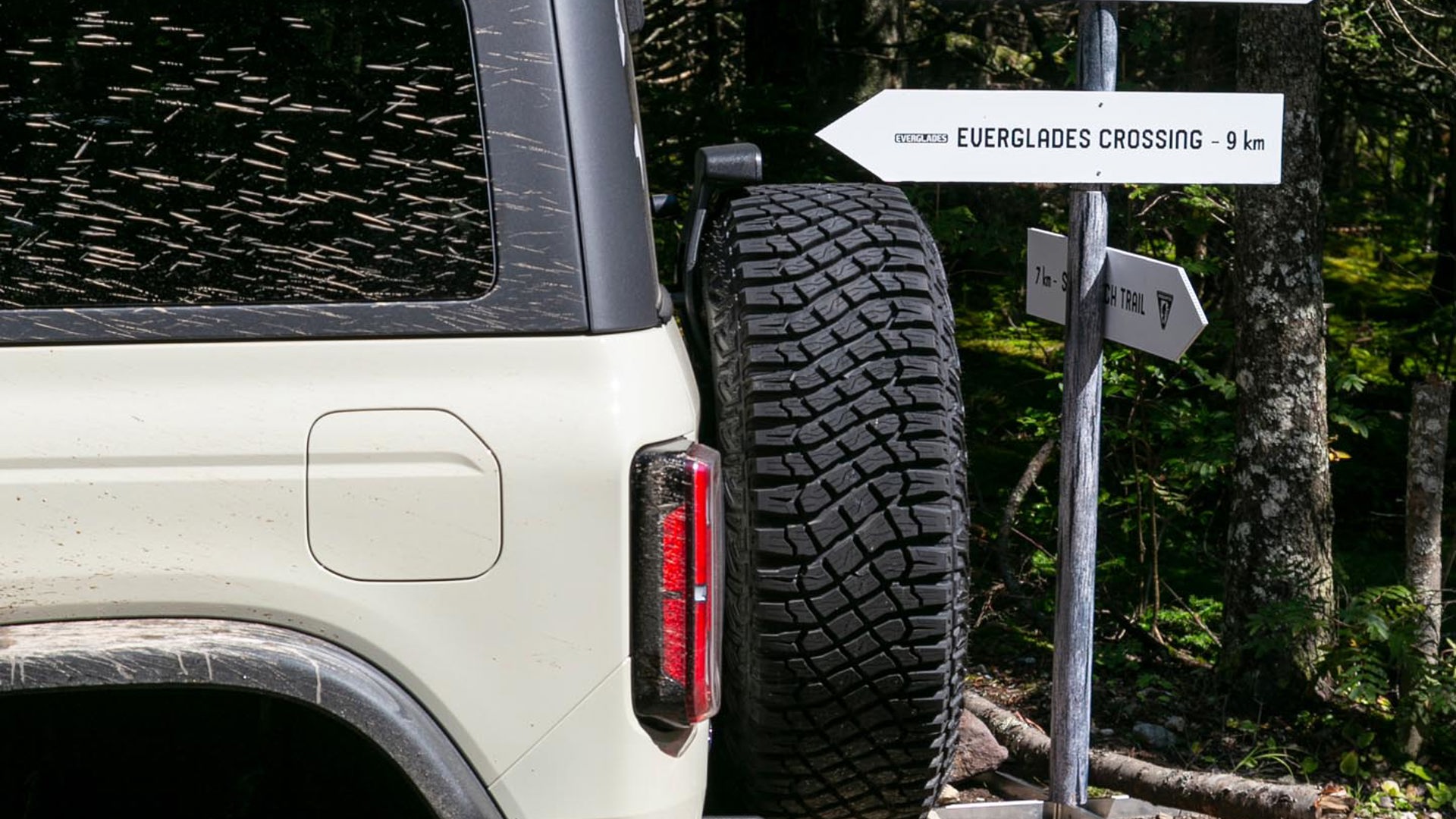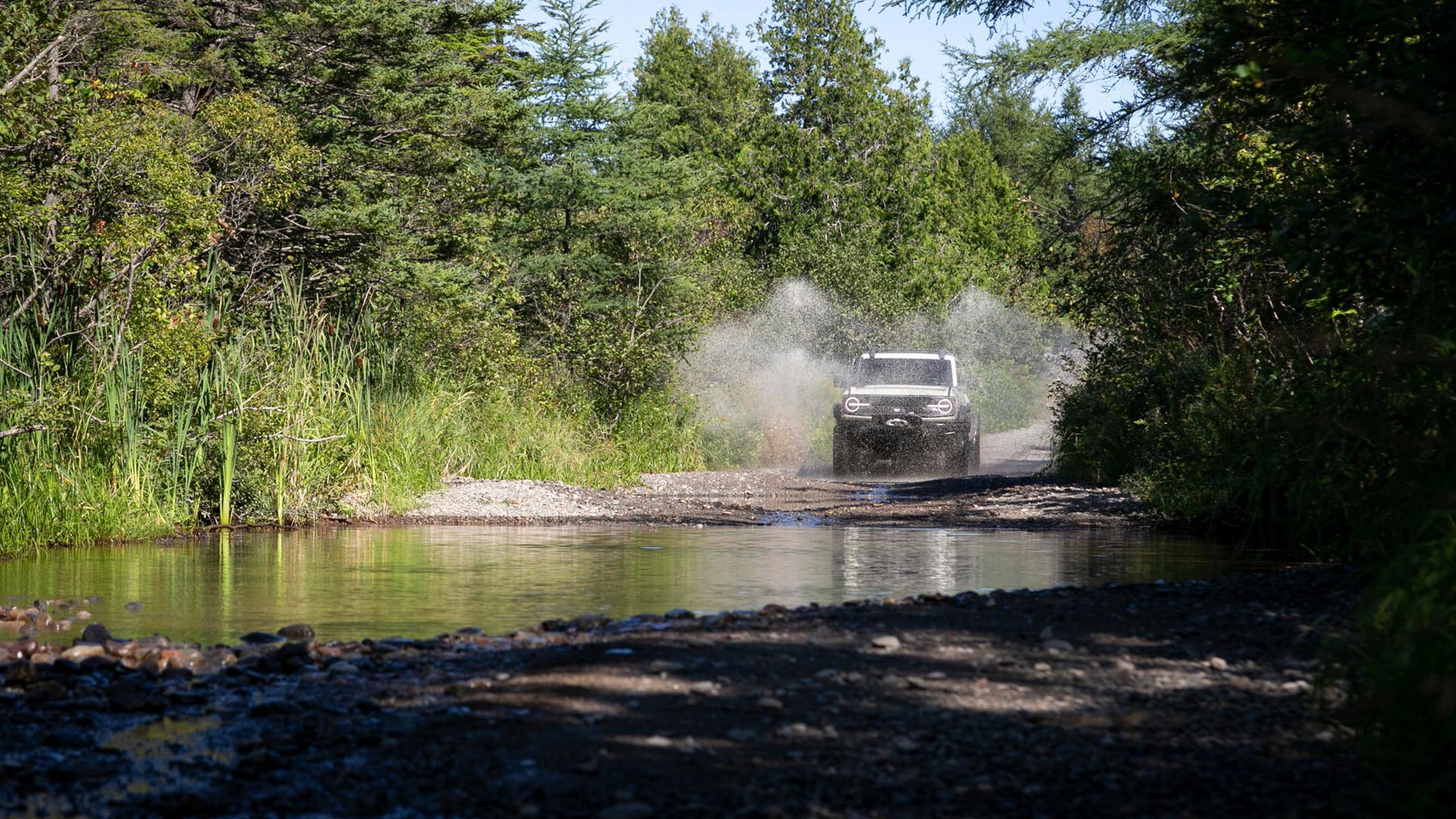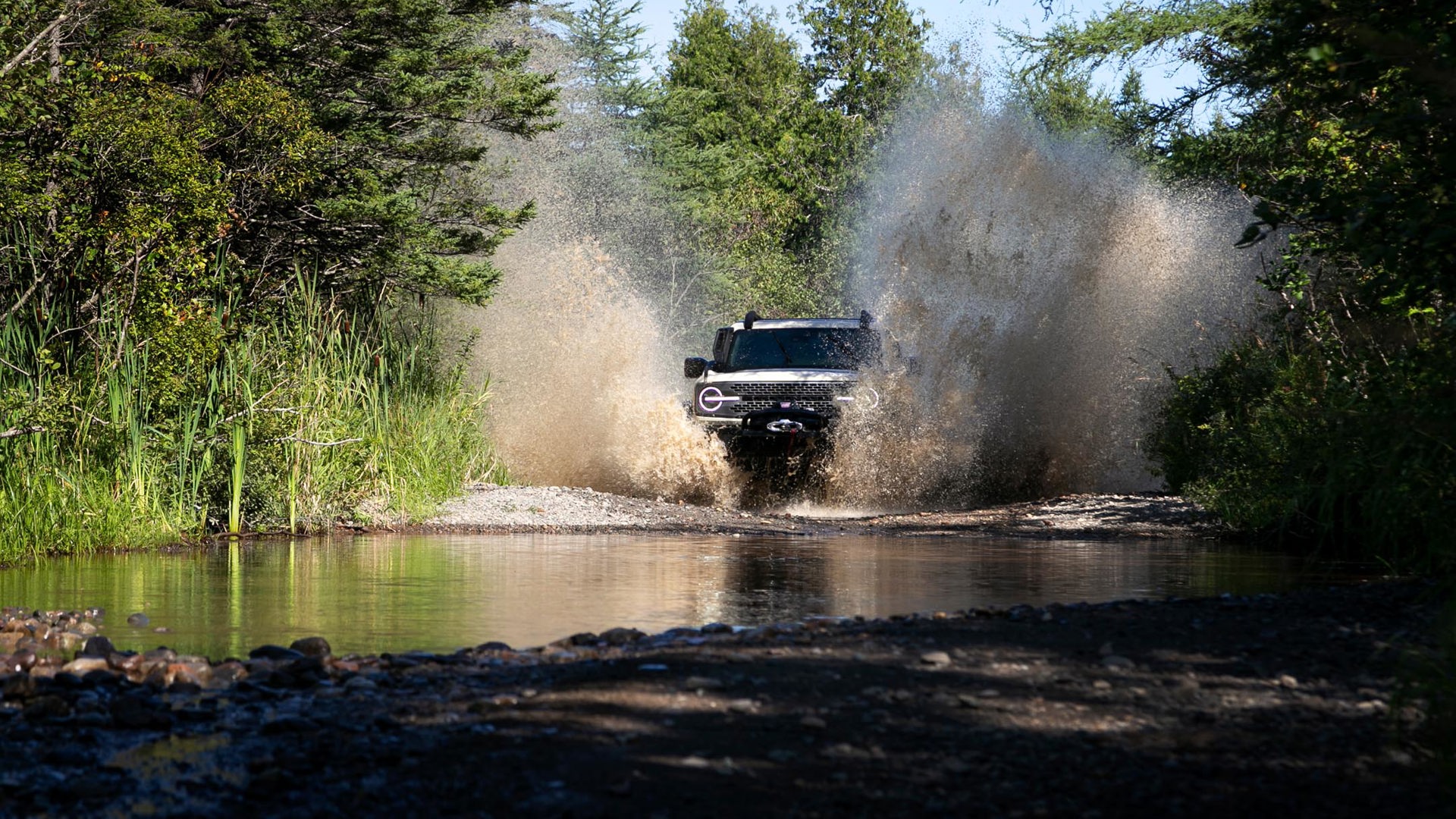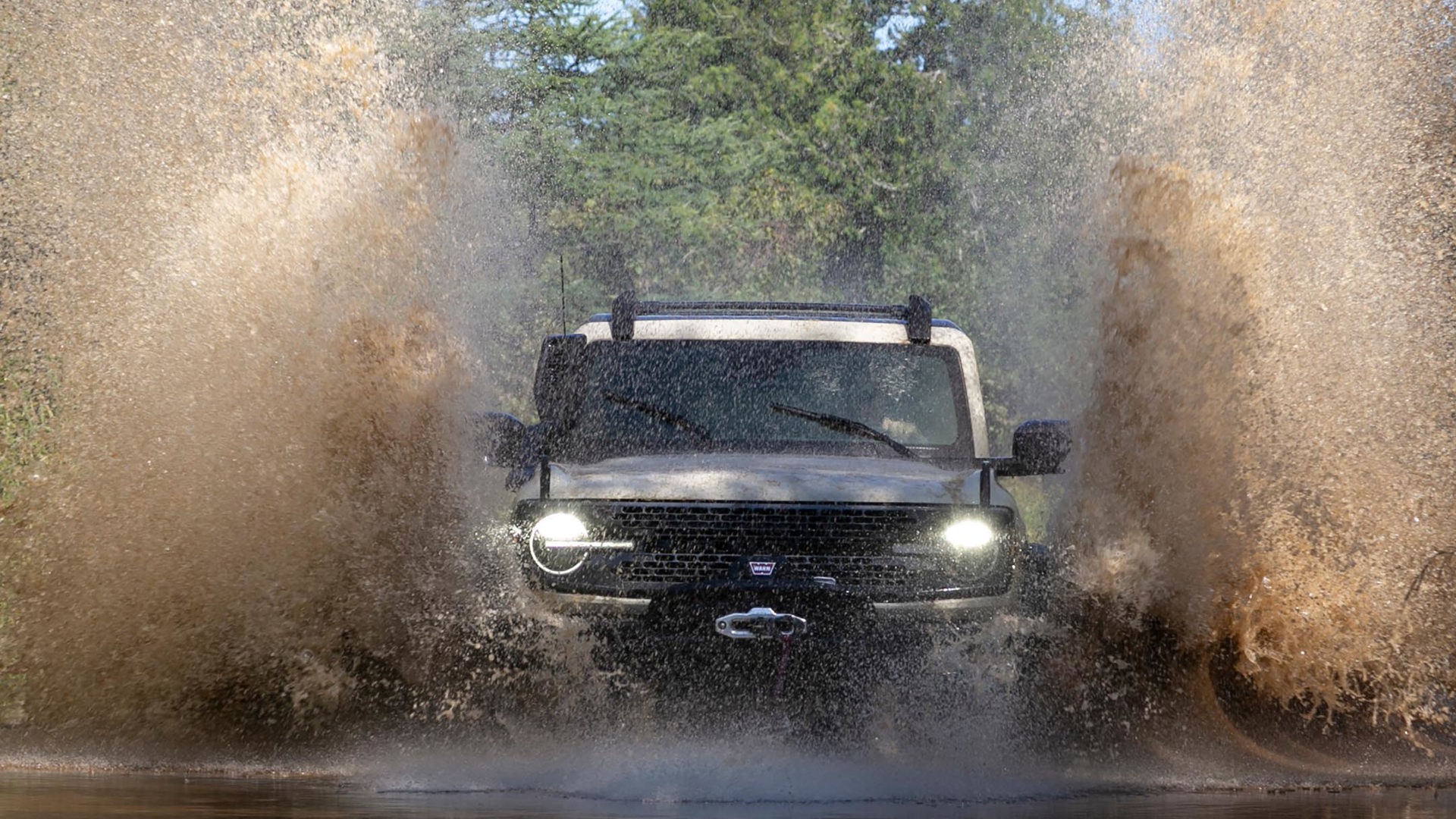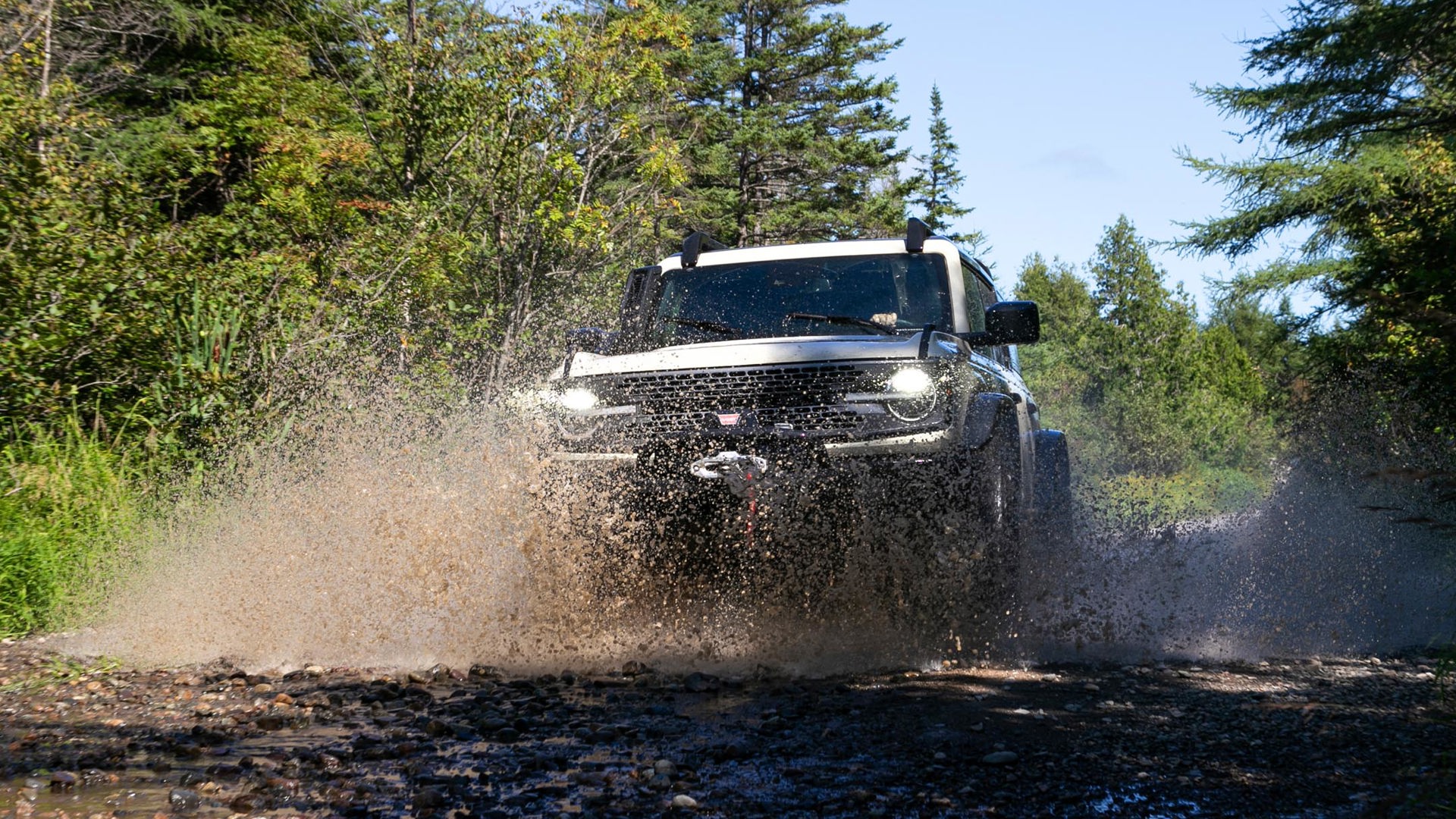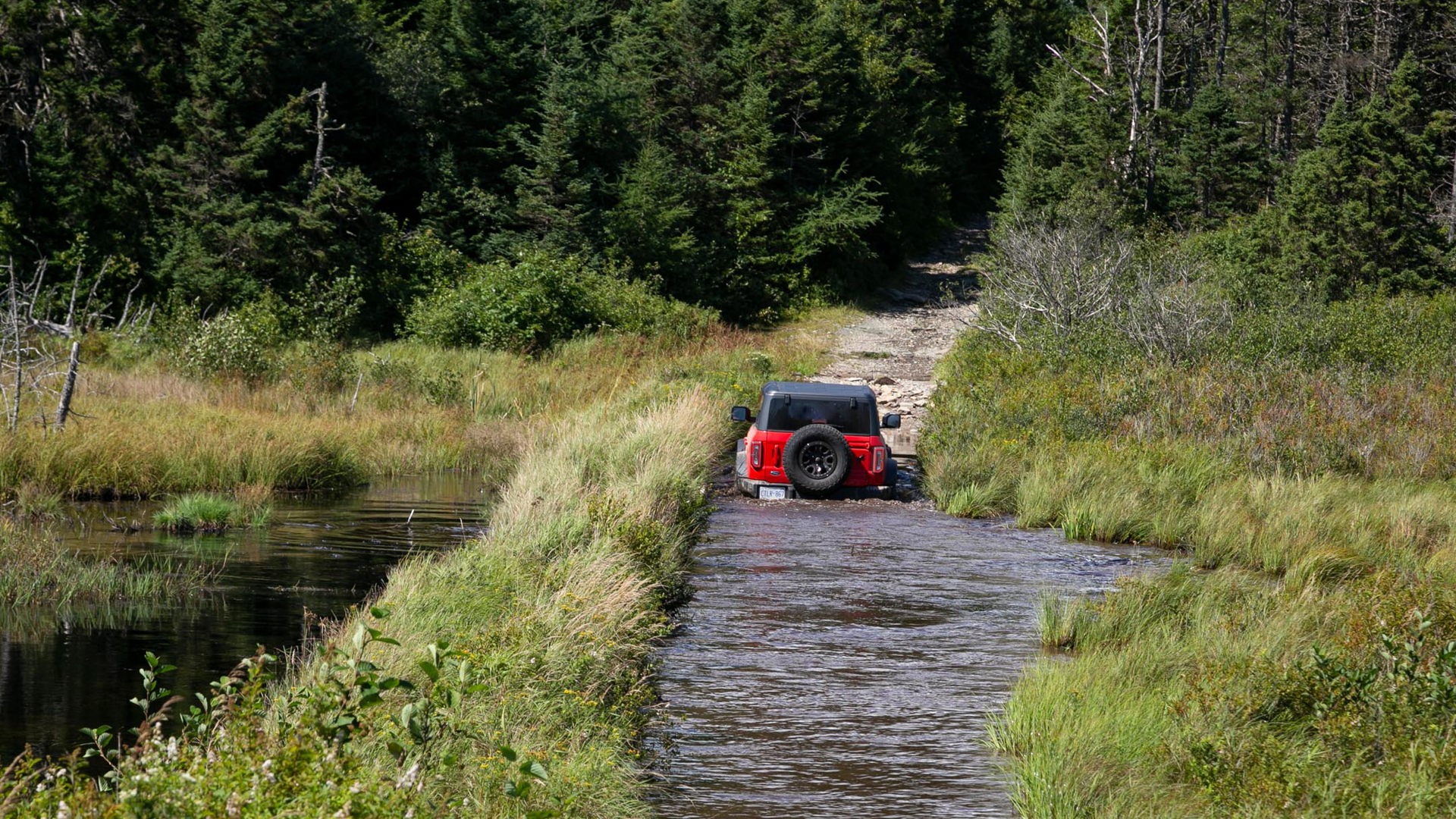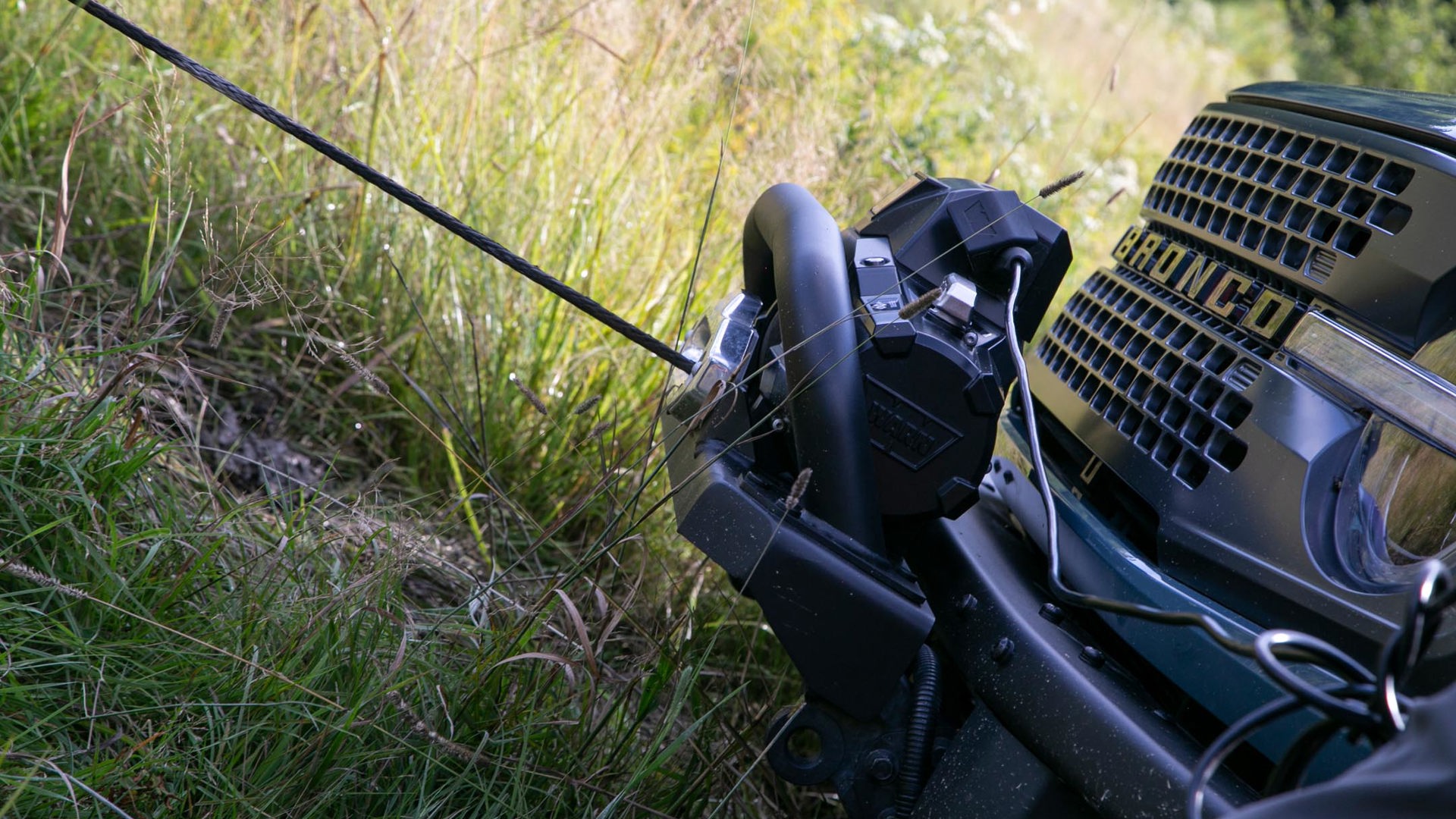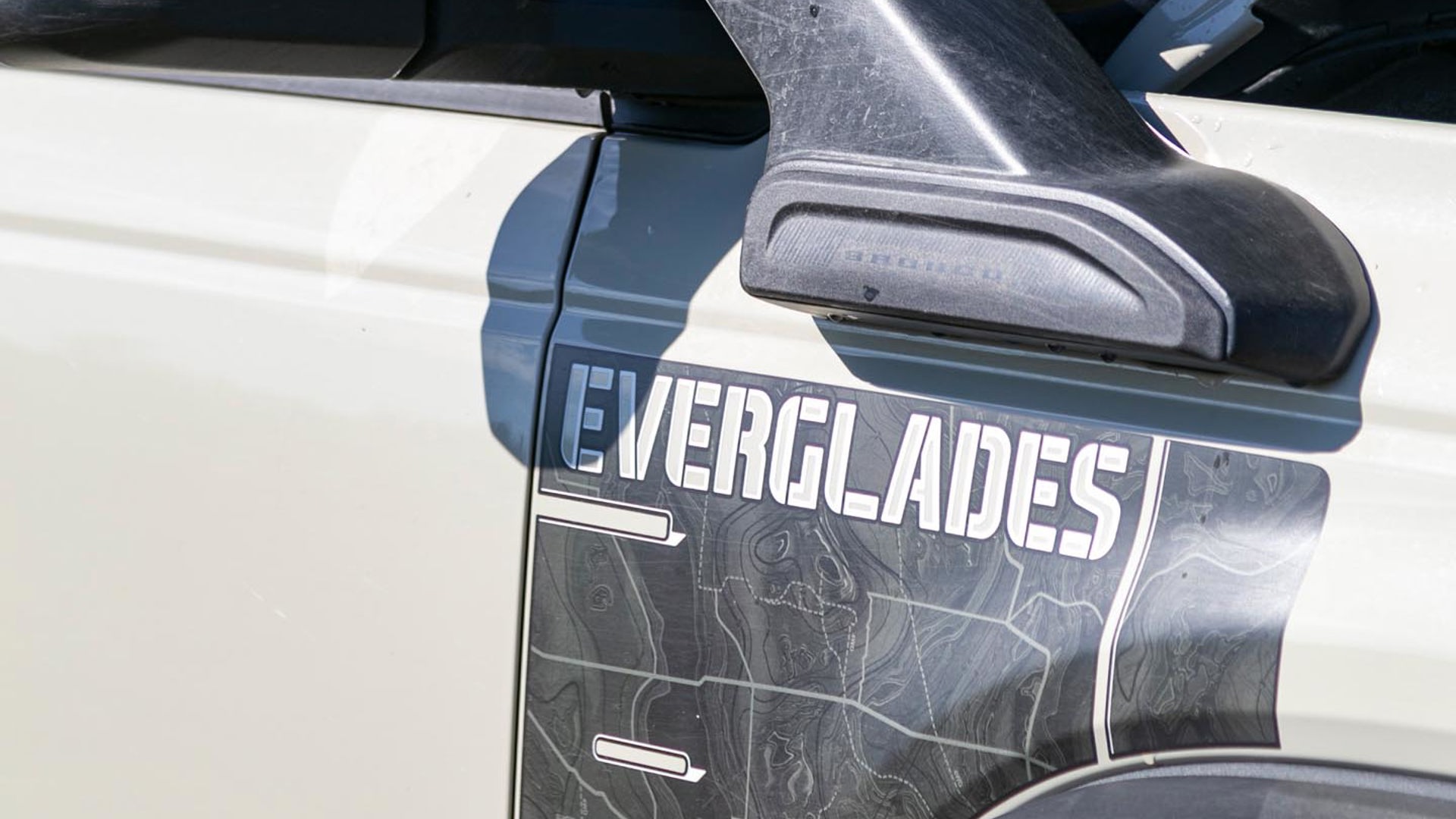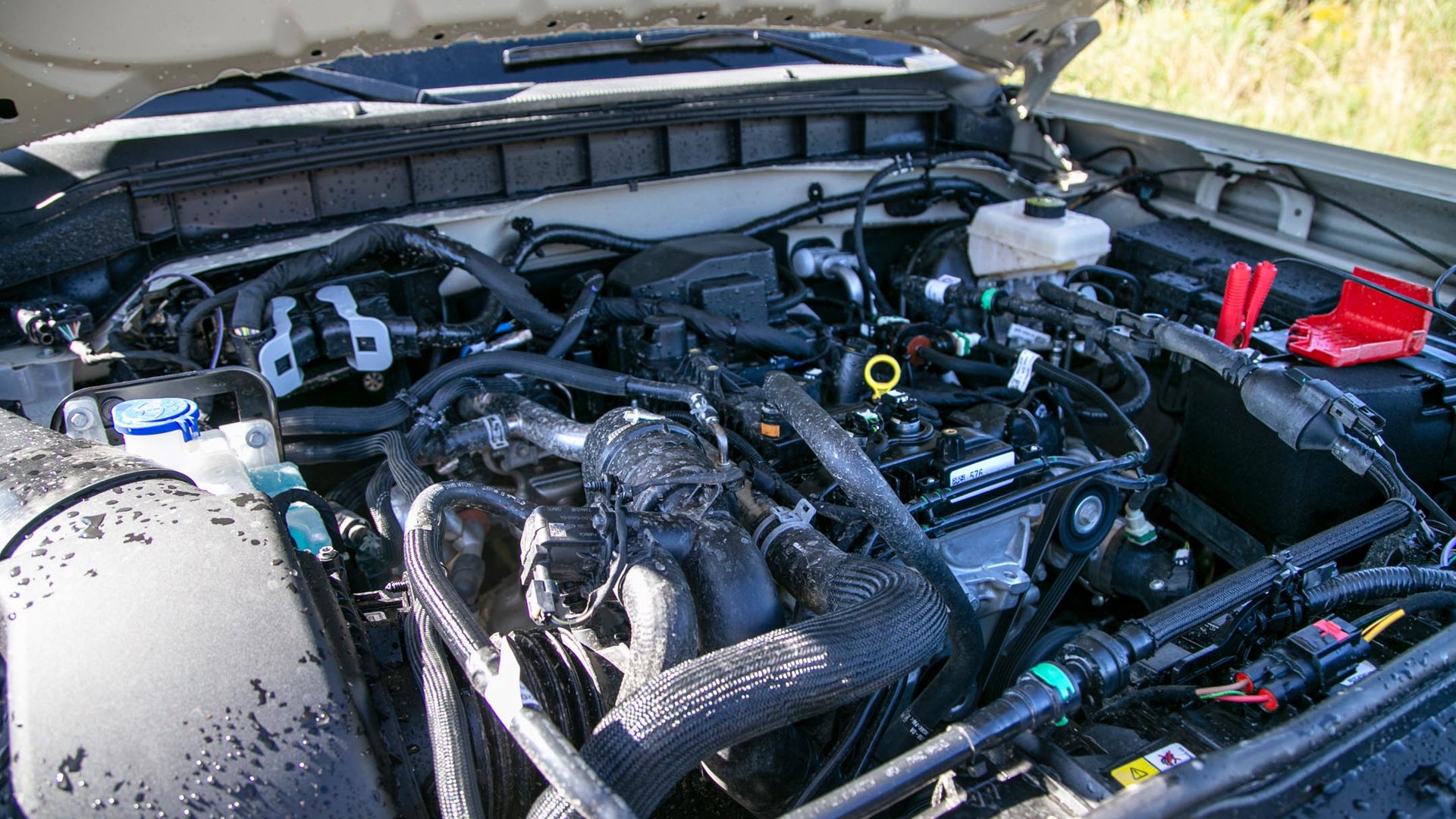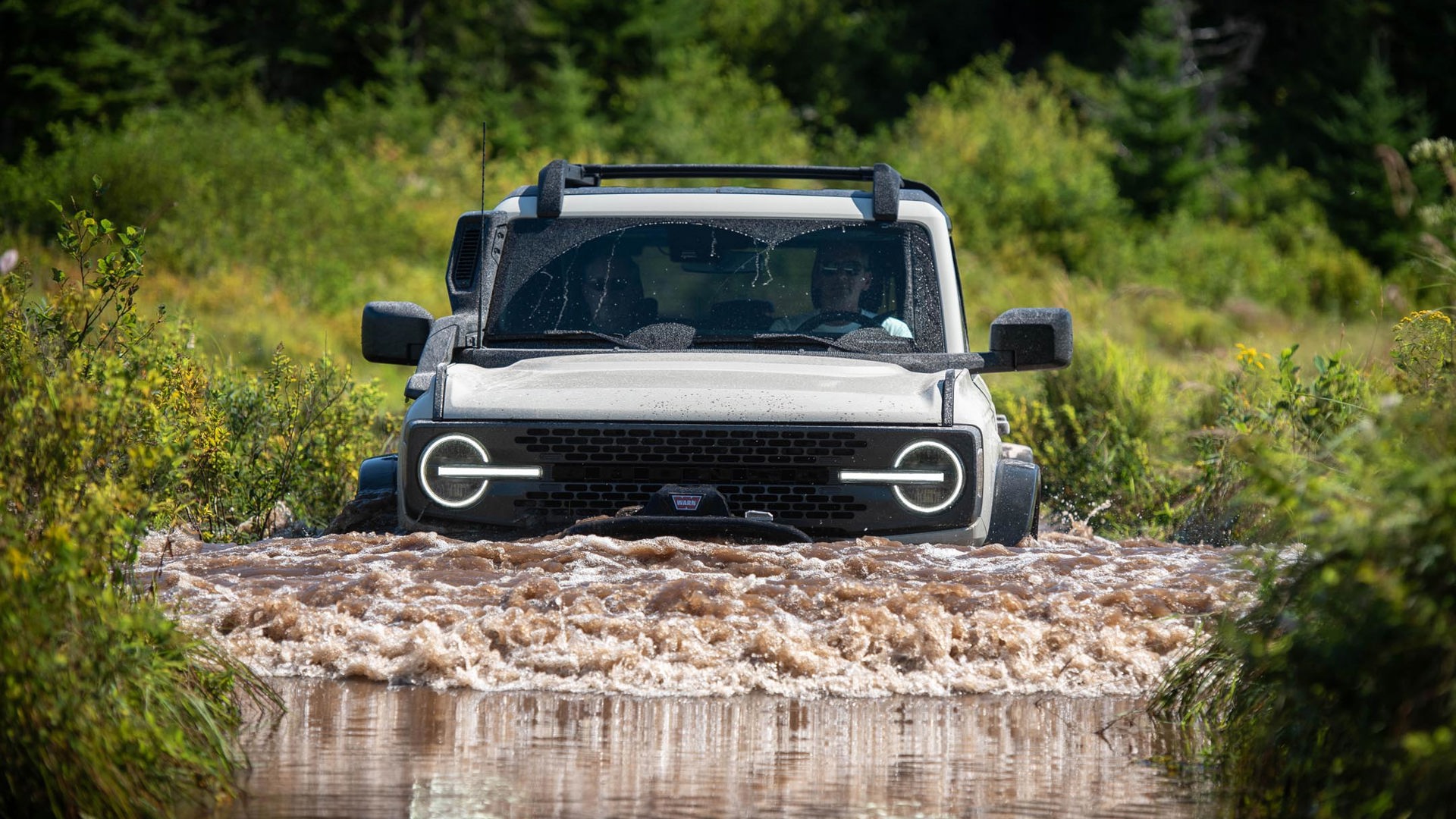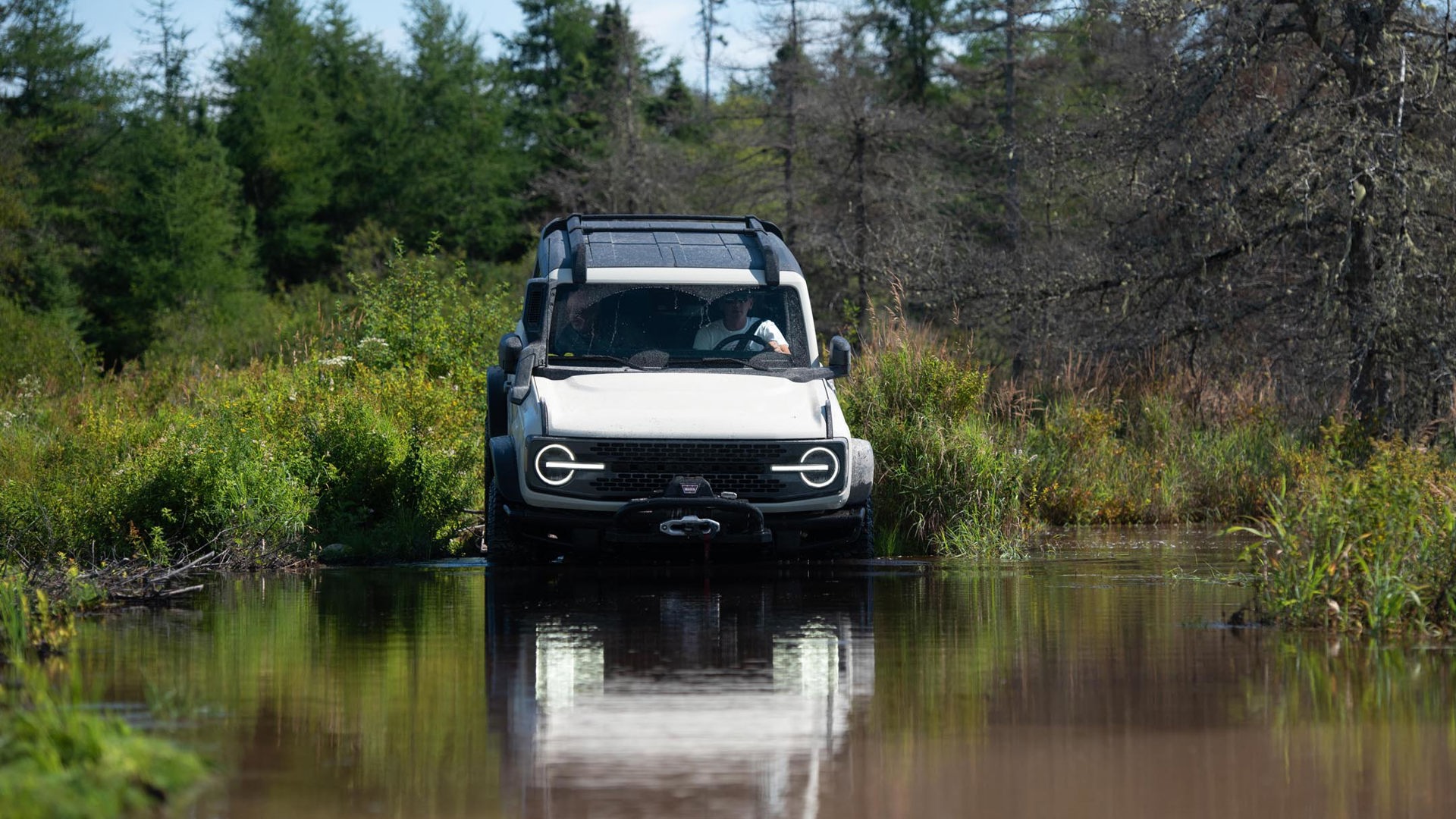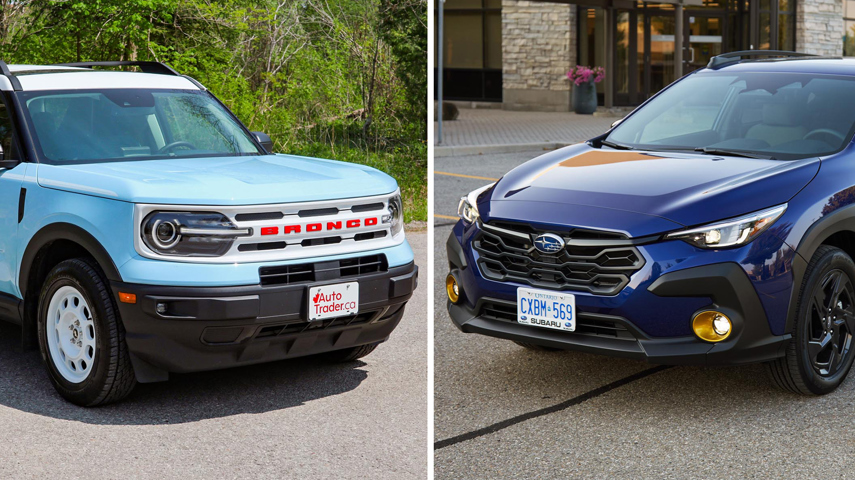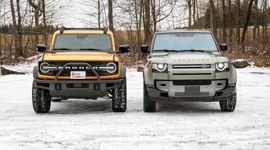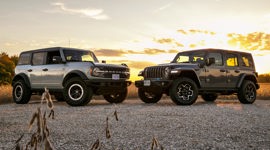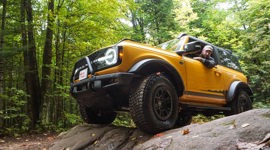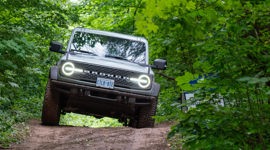Ford already proved it was serious about the reborn Bronco’s off-road prowess.
Every time we’ve managed to get our hands on one here at AutoTrader we’ve sought out fields, trails, bogs, and rocks to drive across, through, and over, and revelled in its confidence at tackling (just about) anything thrown at it. If that’s not enough, the Bronco emerged victorious in not one but two comparison tests, upstaging both the segment-defining Jeep Wrangler and the chic-but-capable Land Rover Defender.
With Jeep upping the ante through the addition of a factory package fitted with 35-inch tires, plus a fire-breathing V8 version, Ford had little choice but to respond – and respond it did, with a pair of pick-your-poison range-topping models that surpass the already formidable Badlands and Wildtrak versions of this retro-inspired off-roader.
The 2022 Ford Bronco Raptor and Ford Bronco Everglades models provide two very different takes on the turnkey off-roader, with the former favouring brawny performance and latter leaning on clever features to set it apart.
The Raptor Treatment
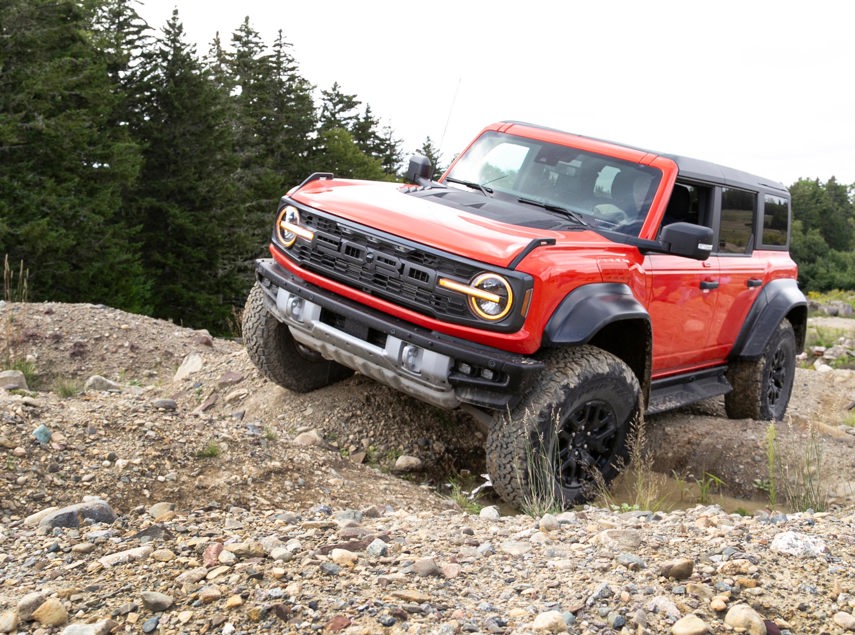
Most of the Bronco buzz has circled around the Raptor, and for good reason. It’s the tallest, widest, most powerful version. For those keeping score, all the key clearance measurements (approach, departure, breakover) surpass the gnarliest Wranglers, but there’s a whole lot more going on here, too.
For starters, Ford has fitted it with a larger twin-turbocharged 3.0L V6 that started life in the slightly silly Explorer ST. It uses different cylinder heads, airflow plumbing, and turbos, with net output of 418 hp and 440 lb-ft of torque on premium fuel, significantly surpassing the 330 hp and 410 lb-ft of torque generated by the Bronco’s 2.7L V6.
The 3.0L channels output through a 10-speed automatic transmission that Ford has dialled in for Bronco use, offering smooth shifts most of the time, and very quick ones when called for, especially when the steering wheel-mounted paddle shifters are used.
While there’s enough giddy-up to make the Raptor the quickest Bronco, in practice it doesn’t feel much speedier than the 2.7L. Part of that comes from turning the standard 37-inch tires, but also because the Raptor weighs in at least 300 kg (700 lb) more than a decked out four-door Bronco Badlands, tipping the scales at 2,600 kg (5,732 lb). The Wrangler 392 delivers a lot more excitement and a bigger shove in the back.
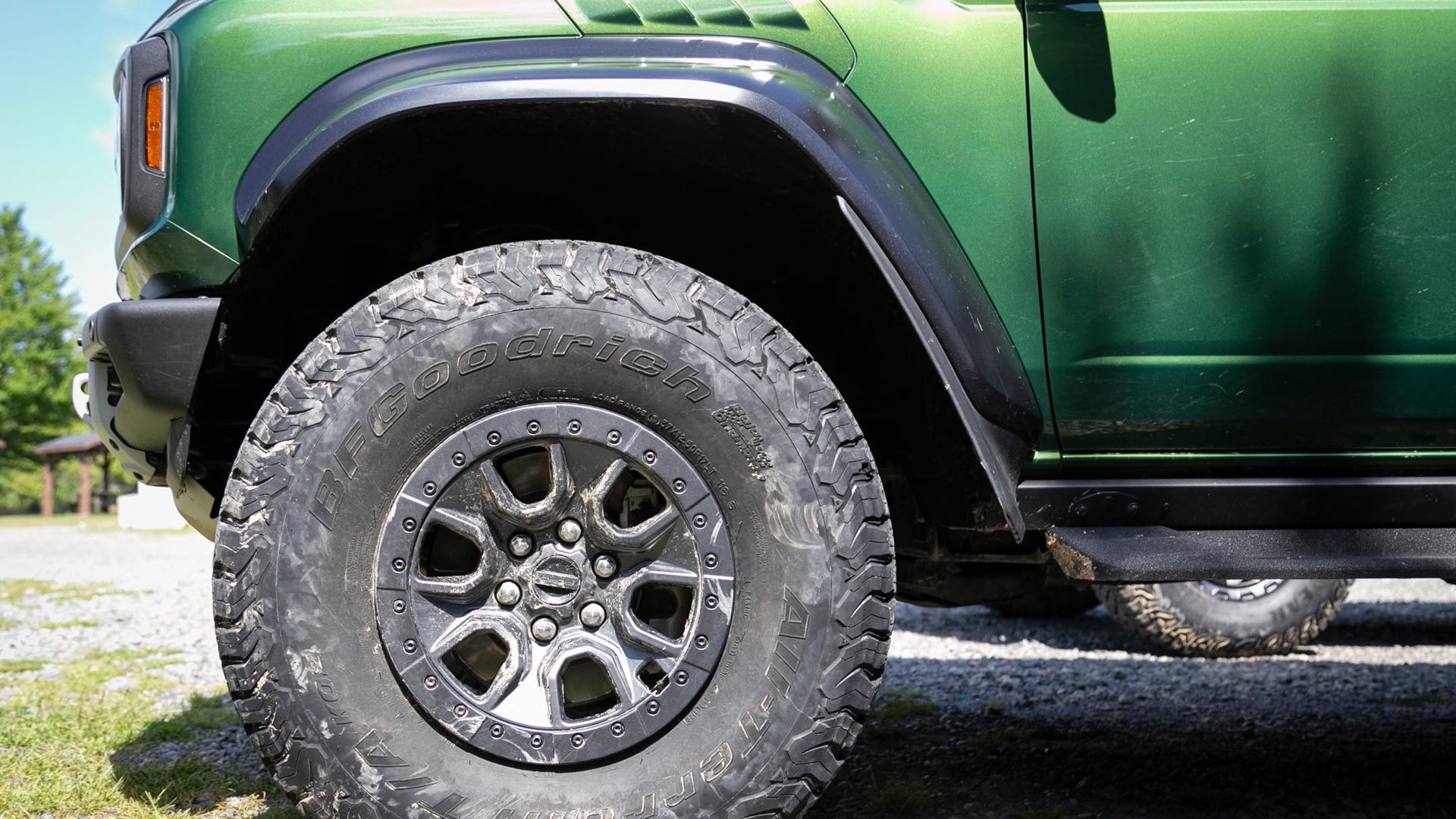
Most of the Raptor’s added bulk comes from what’s beneath, including reinforcements to the frame basically anywhere it connects with the suspension. In addition to semi-active shocks front and rear, the suspension is also beefed up with tougher components plus a locking Dana 44 front end, and a Dana 50 heavy-duty solid rear axle. There’s also additional structural bracing built into the back end to increase rigidity that has the added benefit of upping the Raptor’s tow rating from 1,588 kg (3,500 lb) to 2,041 kg (4,500 lb).
The strengthened stuff is meant to help the Raptor withstand high-speed desert running, while the increased suspension travel also helps the rubber stay in contact with terra firma at speed and during rock crawling. There’s now 330 mm (13 in) of travel up front and 356 mm (14 in) in the rear, an improvement of roughly 102 mm (four in) compared to a Bronco with the Sasquatch package. Ground clearance, at 333 mm (13.1 in), is increased a whopping 122 mm (4.8 in) versus a base trim Bronco. Ford has ditched the Goodyear tires that come with the Sasquatch package, instead opting for massive 37-inch BF Goodrich K02 all-terrains.
The off-road portion of the media drive event put together by Ford Canada was challenging enough to be impassable for a typical crossover, and at the speeds travelled in some instances would’ve sent a Wrangler bouncing right off the trail. None of it caused the Raptor to break a sweat. Even still, both the Wildtrak and Badlands versions were made available, and they also tackled the course with remarkably little effort, reaffirming just how good even those “lesser” Broncos are.
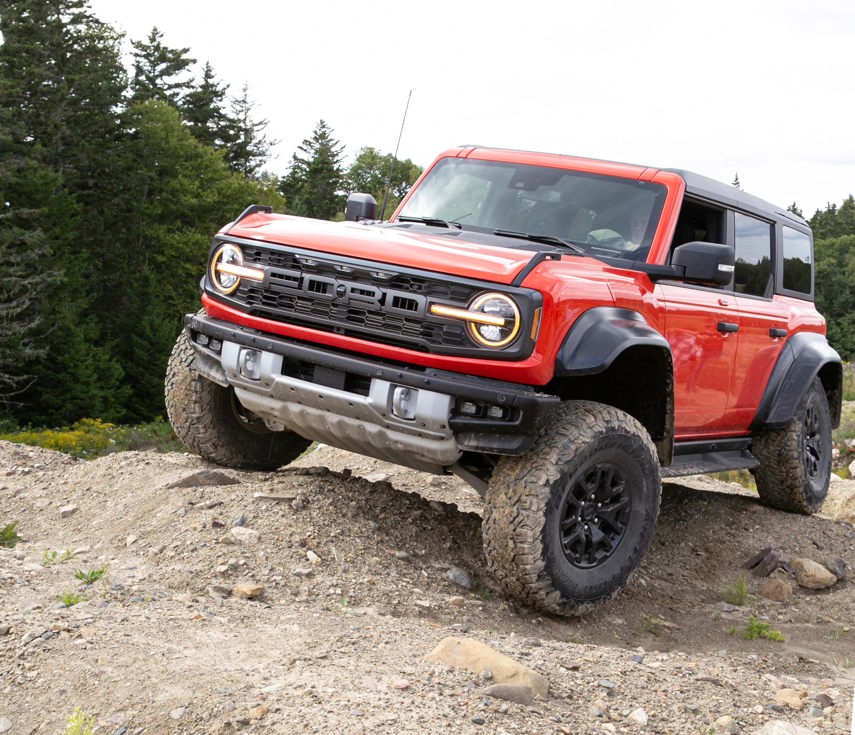
A brief demonstration was set up over a few dozen dirt mounds of varying sizes and shapes to showcase the Raptor’s extreme articulation, plus Ford’s clever skid-steer feature that locks the inside rear wheel to help the Bronco pivot in tight spots off-road. With a slow and steady pace, and with the front sway bar electronically disconnected (standard on the Raptor and Badlands) plus the occasional clang from the skid plates, the Bronco crawled almost gracefully around the circuit with what appeared to be relative ease.
Graceful is not, however, how to describe the Raptor’s styling. With its width stretched more than 203 mm (eight in) beyond models equipped with the Sasquatch package, the Raptor is seriously wide – enough so that it requires government-mandated clearance lights in the grille, mirrors, and across the back. The sliced-in fender vents add a touch of aggressiveness, but the oversized plastic fenders required to sufficiently cover the monstrous tires look like an afterthought quickly crafted from cutting the bottoms off of industrial garbage bins. It’s a tall, wide, and mean-looking rig, especially from the front.
Inside, the Raptor features a few flourishes of red trim, including the 12-o’clock spot on the steering wheel, and comfier seats. Otherwise, it resembles other models in the Bronco lineup.
Florida-Bound
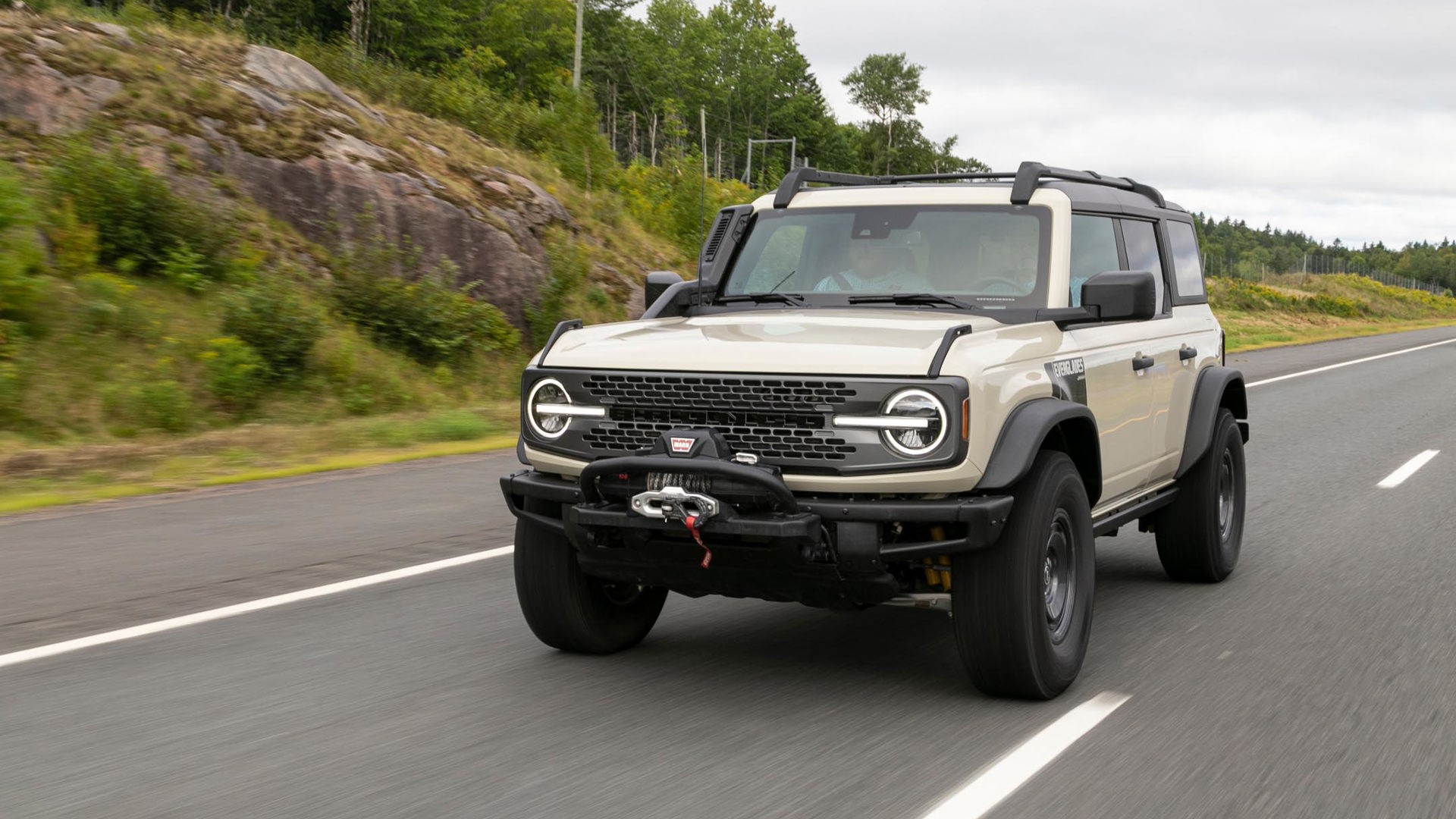
Where the Bronco Raptor claims top-dog in the lineup, the other new Bronco is no less impressive. The Everglades trim ended up being the better-suited machine for the largely wet and muddy trails we covered in rural New Brunswick. Identified by the fender graphic with depth markers designed to be visible by a driver, the Everglades is easily spotted by its unique wheels, standard 4,536-kg (10,000-lb) winch, and snorkel. The latter is a particularly clever piece that features two reversible plates to facilitate safe engine breathing in dusty scenarios or wet ones.
Ford has also repositioned vents on the transfer case and differentials to higher locations, and fitted 35-inch mud terrain tires, contributing to the Everglades’ fording capability of 925 mm (36.4 in), up from 850 mm (33.5 in) for other Sasquatch models, but still 15 mm (0.6 in) short of the Raptor.
Other off-road essentials like a slew of skid plates and rock rails are all included on the Everglades. So is a seven-stage drive mode system that helps set up the rig for optimized wheeling regardless of weather or terrain with the turn of a dial, making it a highly-capable and enticing package. The interior resembles other Bronco models with its washable vinyl upholstery.
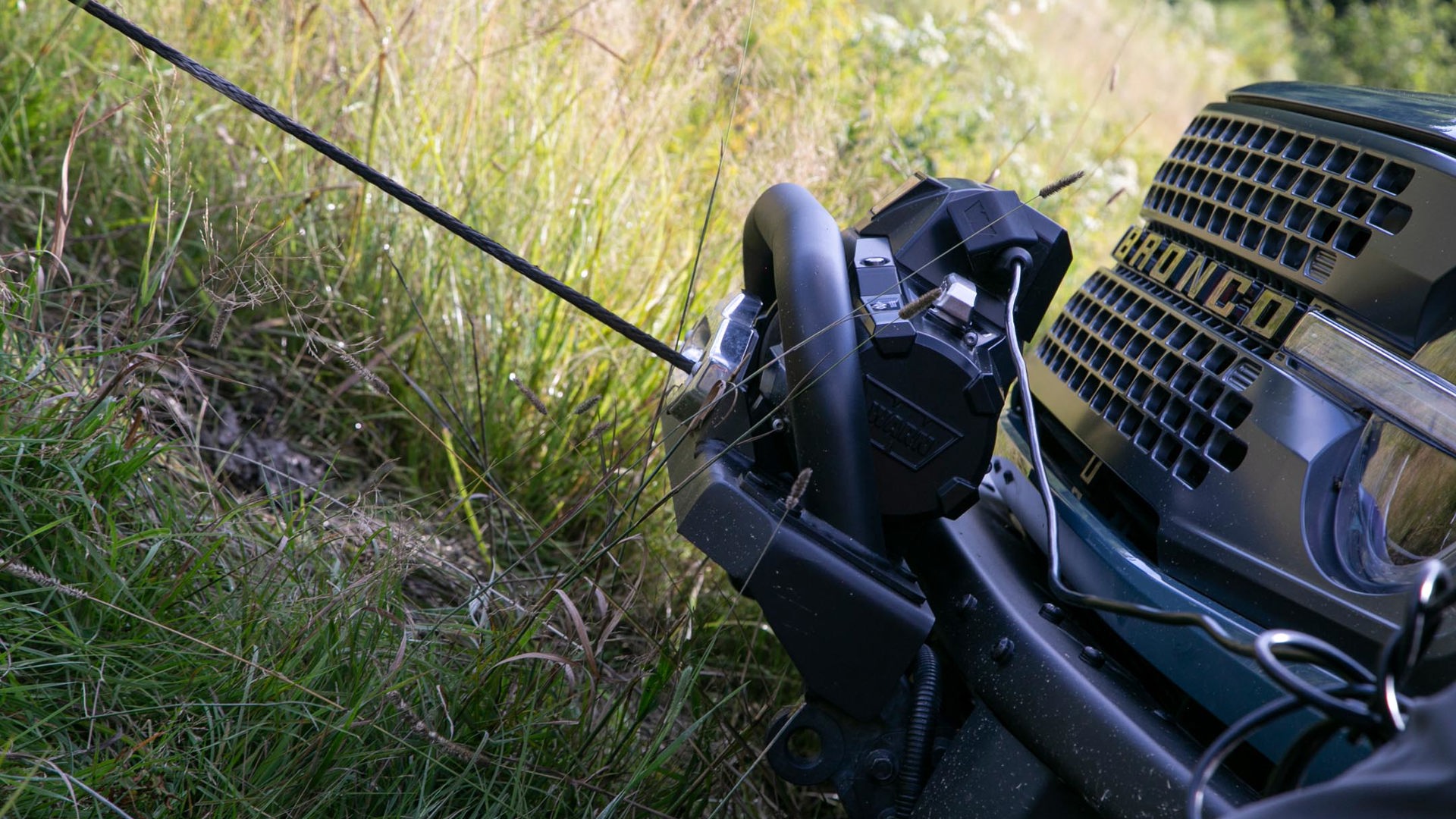
The Warn winch means there’s no front camera system like there is on other models; and it’ll make it difficult to mount a front licence plate in jurisdictions that require them. But it’s an impressive – and waterproof – bit of gear from the industry-standard brand.
Ford is offering the Everglades only in four-door format with the base turbocharged four-cylinder engine and automatic transmission. The 2.3L provides enough torque to get the big SUV rolling without difficulty, and while it isn’t as quick as the V6, it’s got ample power for an off-road machine.
The Everglades package doesn’t include the electrically-operated stabilizer disconnect, and over some of the taller obstacles on the trails there was less articulation than the Raptor or Badlands. Despite this, the Everglades made short work of the water crossings we encountered, and even at speed, managed to swallow the rocks and bumps with impressive composure.
Pay to Play
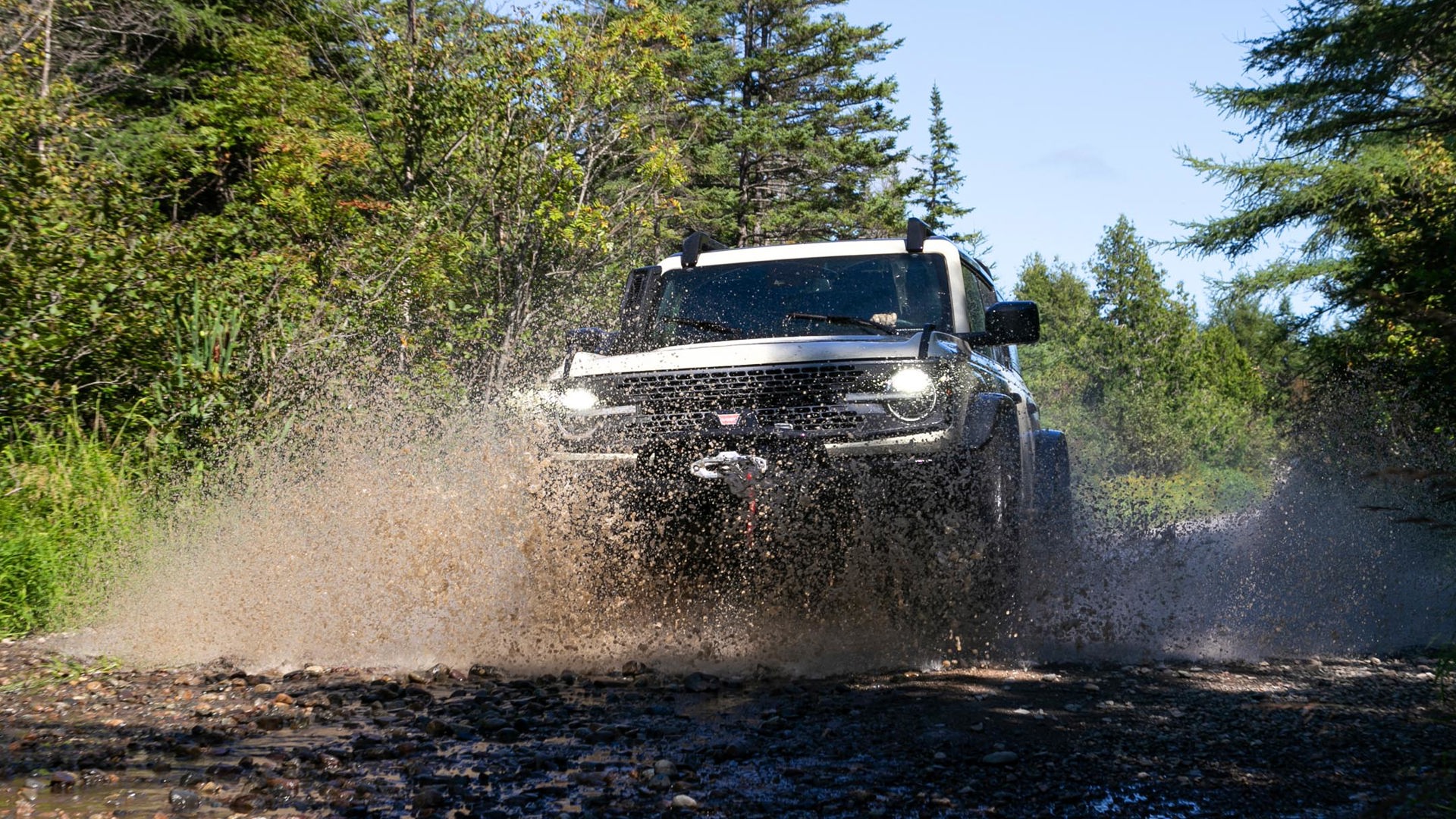
Ford has priced the Bronco Everglades at $70,599 before freight and taxes, which seems like a steep jump past the $59,699 Badlands, but when factoring in the standard Sasquatch package, plus the snorkel and winch, as well as the trim-specific modifications, it’s not a bad value. This is a very accomplished off-road rig right off the showroom floor.
The Bronco Raptor, at $99,995, is a significant price jump over even the Everglades. The Luxury package adds an additional $3,395, and destination charges tack on another $2,095 (the same applies to the Everglades). Given how capable a Bronco Badlands or Wildtrak is for at least $35,000 less, the Raptor will require a passionate (and affluent) buyer to be willing to spring for this top-tier model.
Final Thoughts
The Ford Bronco has proven to be exceptionally popular, and with supply chain issues compounding matters, the entire 2022 model run has already been spoken for. Buyers looking for either of these limited-run models should put their orders in for a 2023 model sooner than later.
